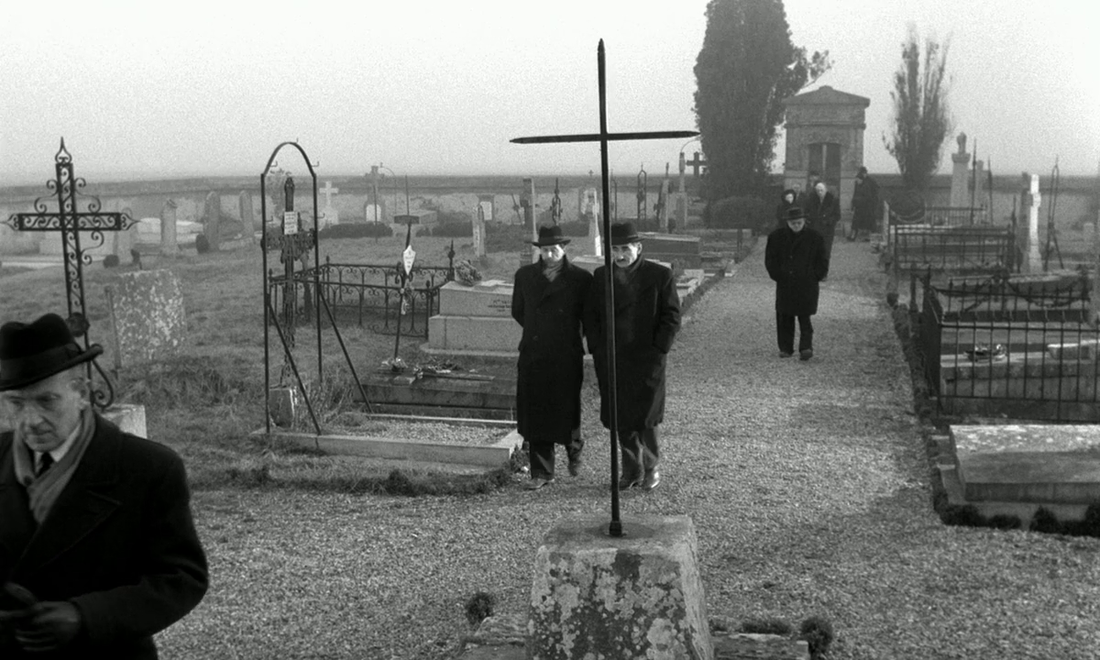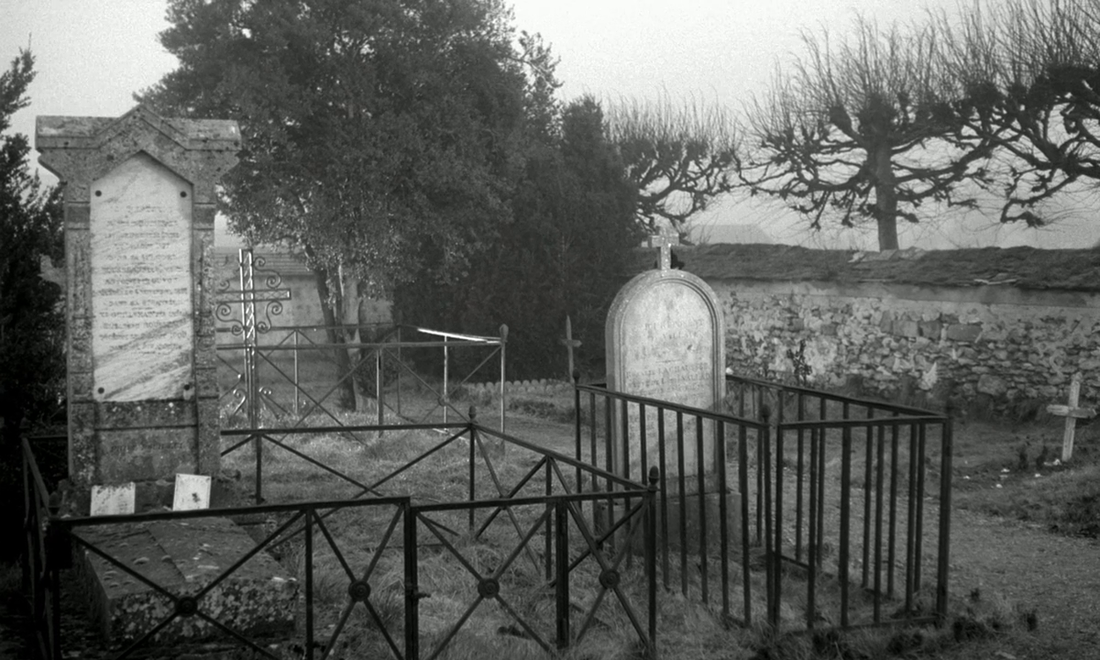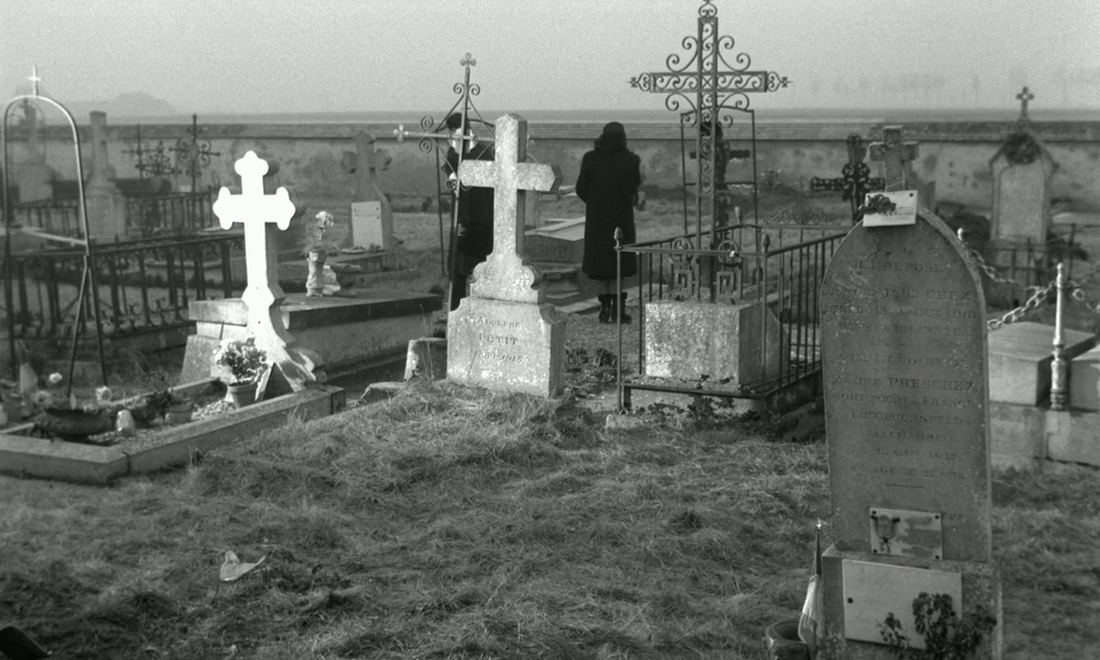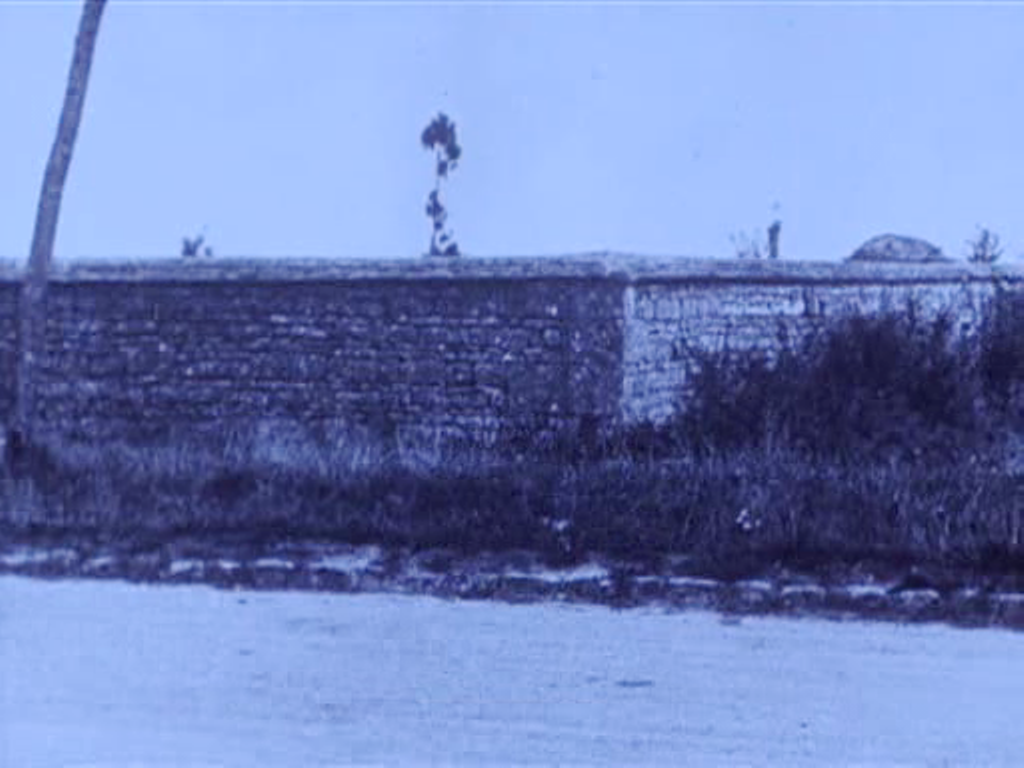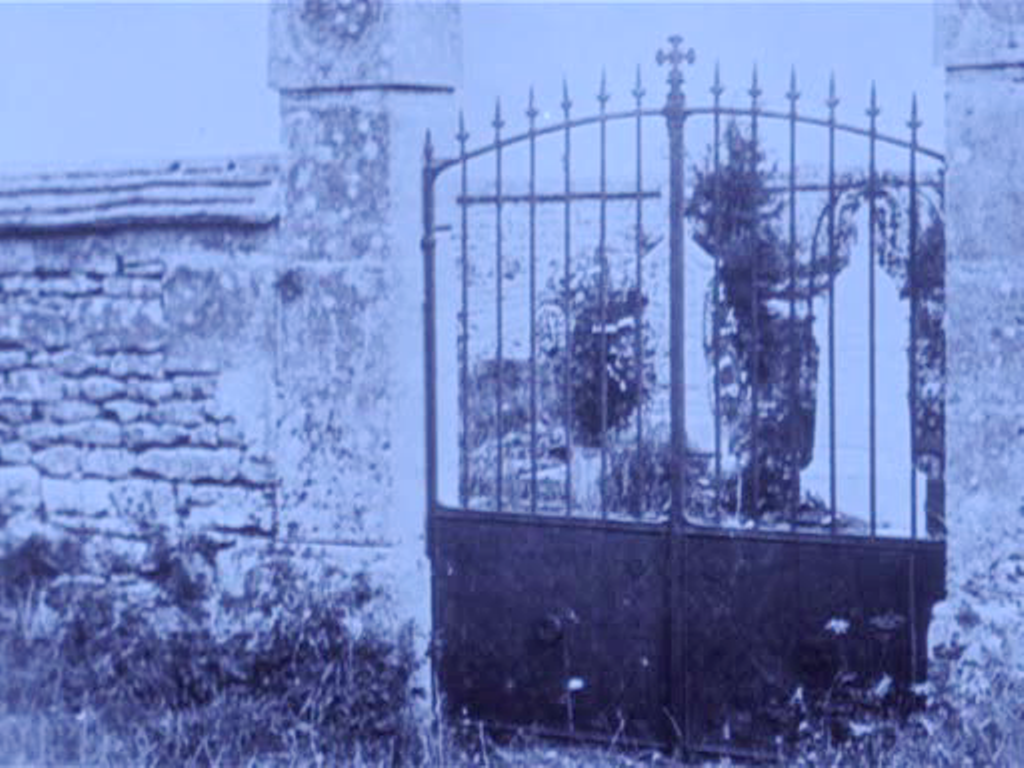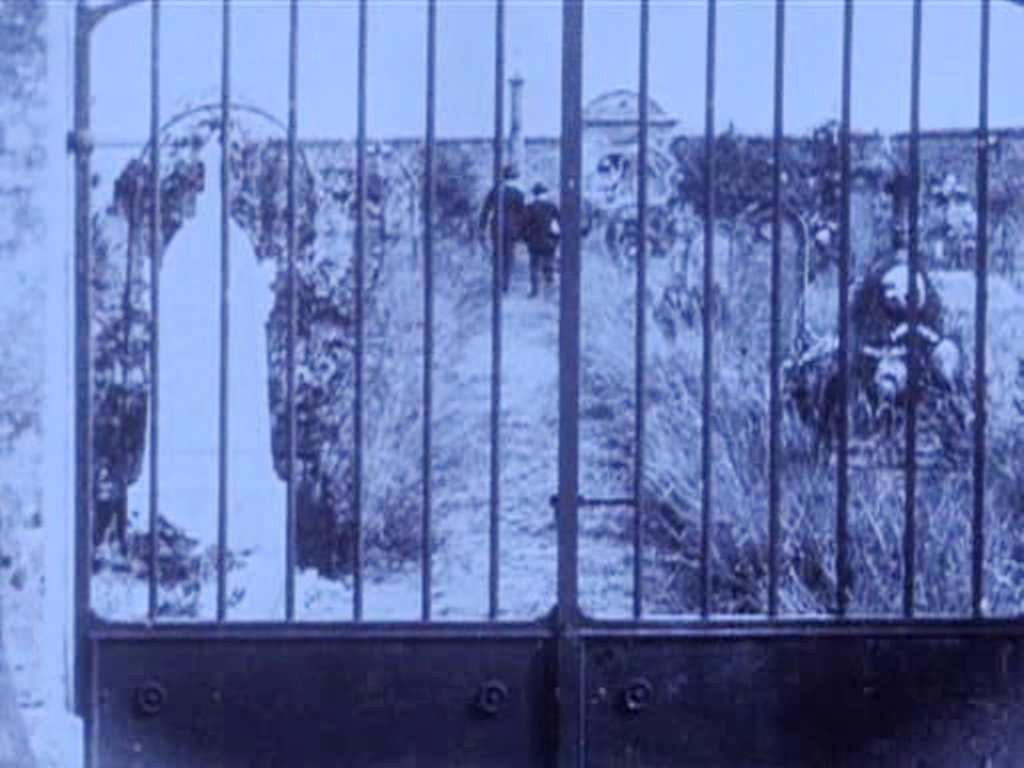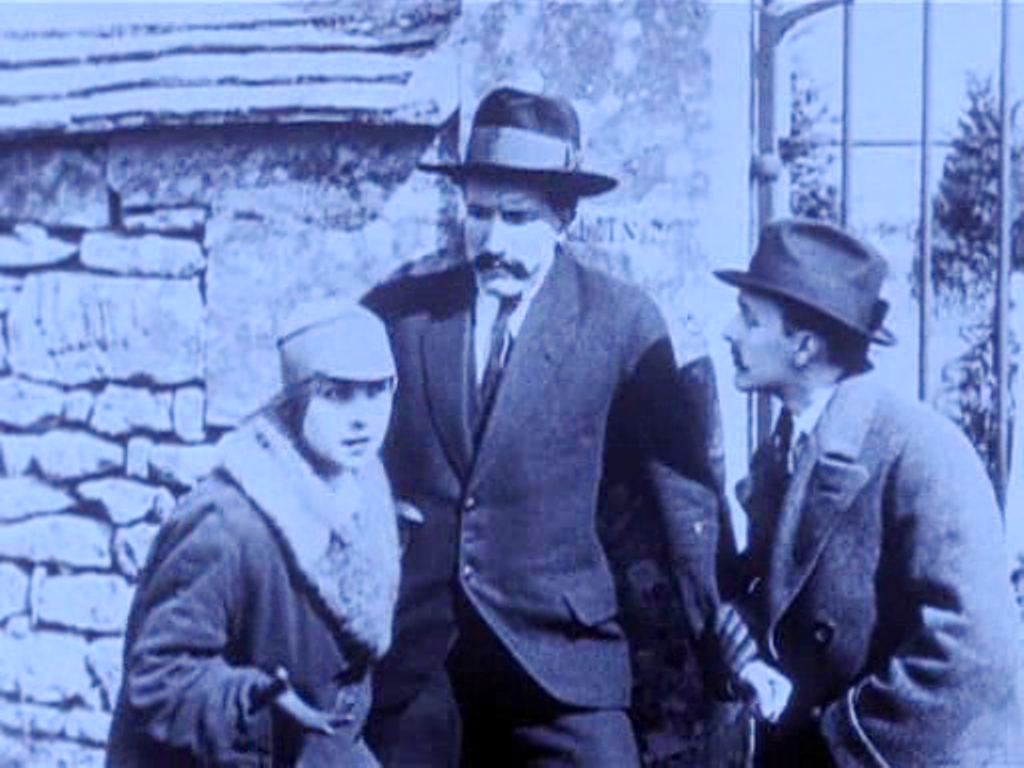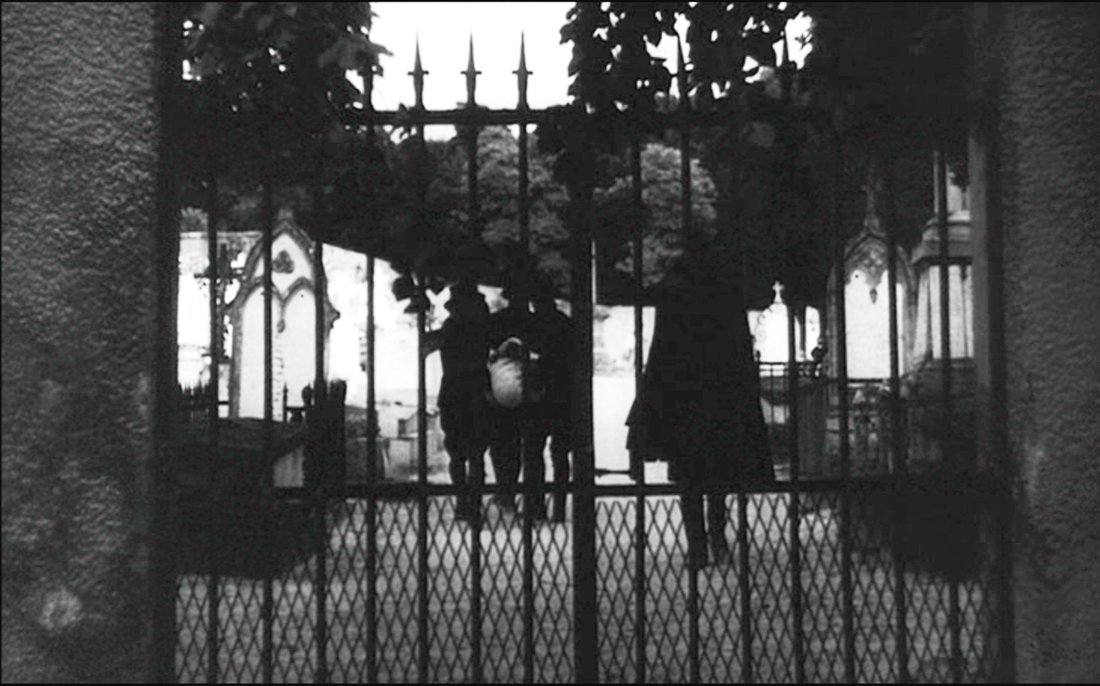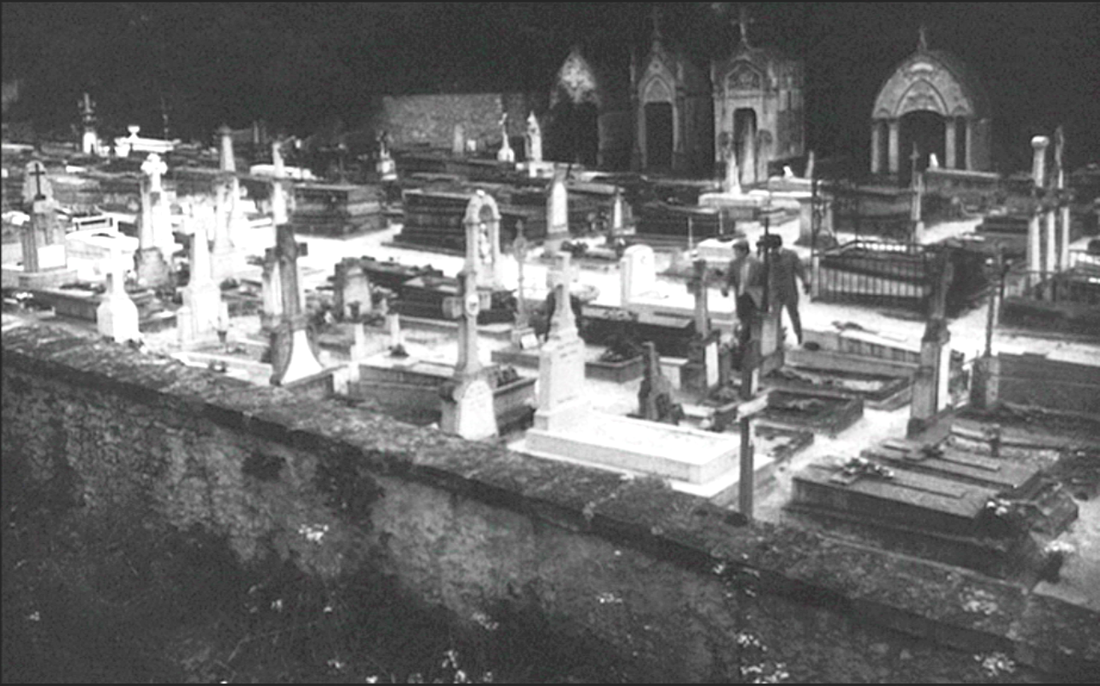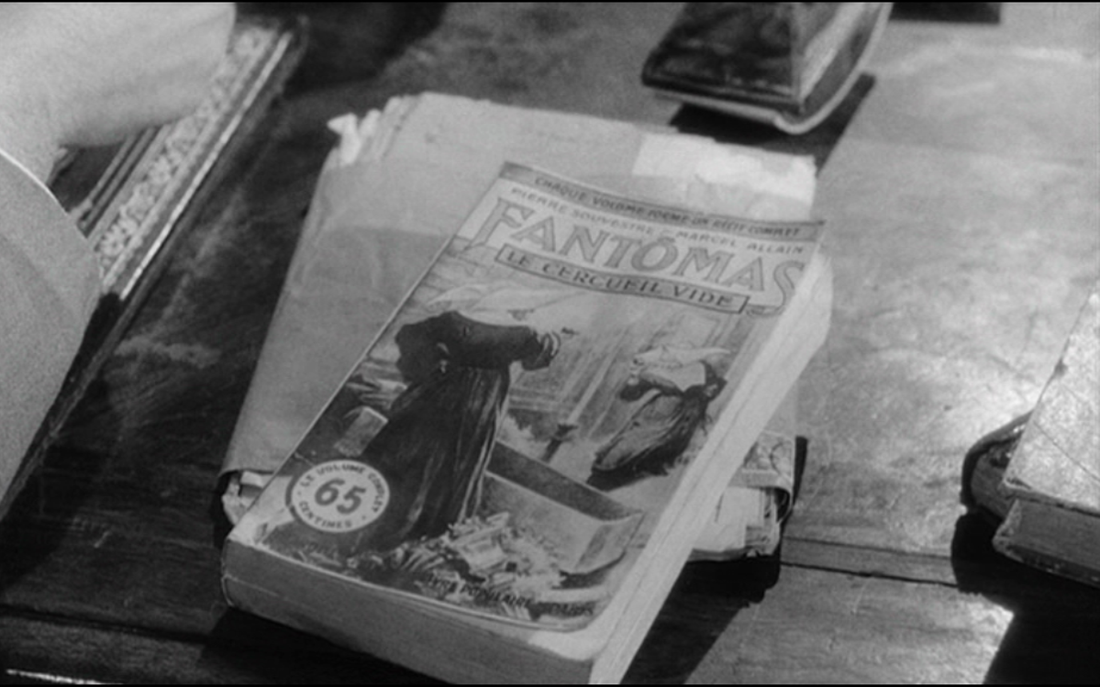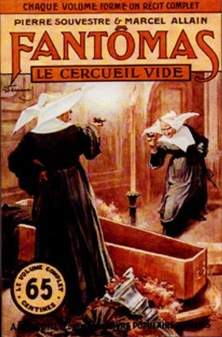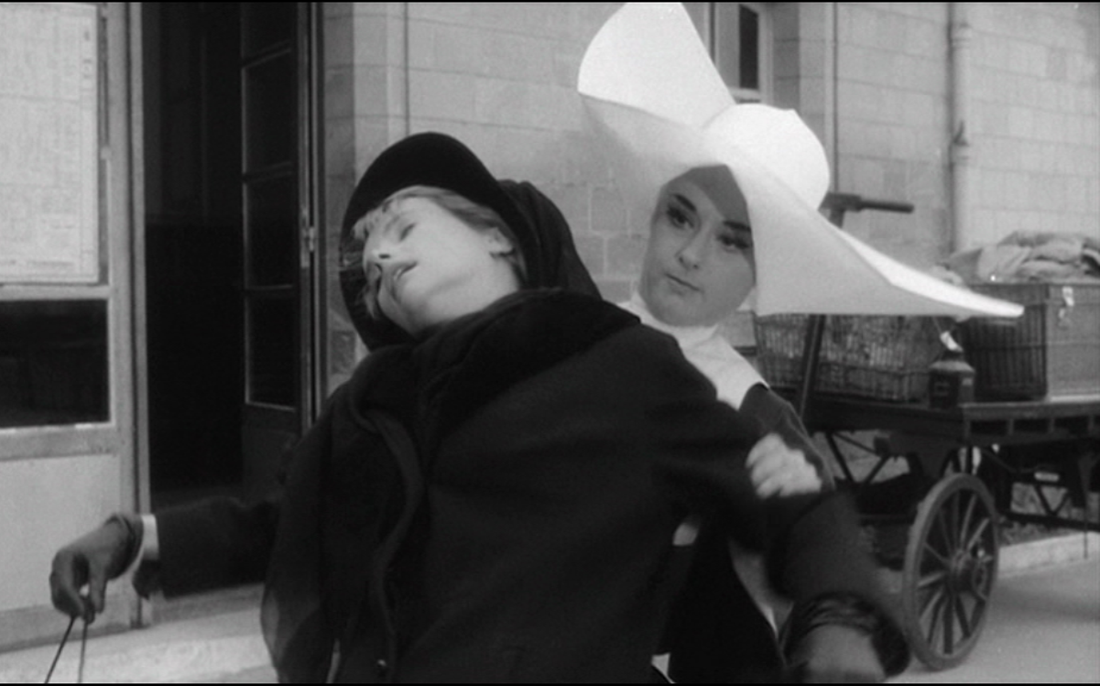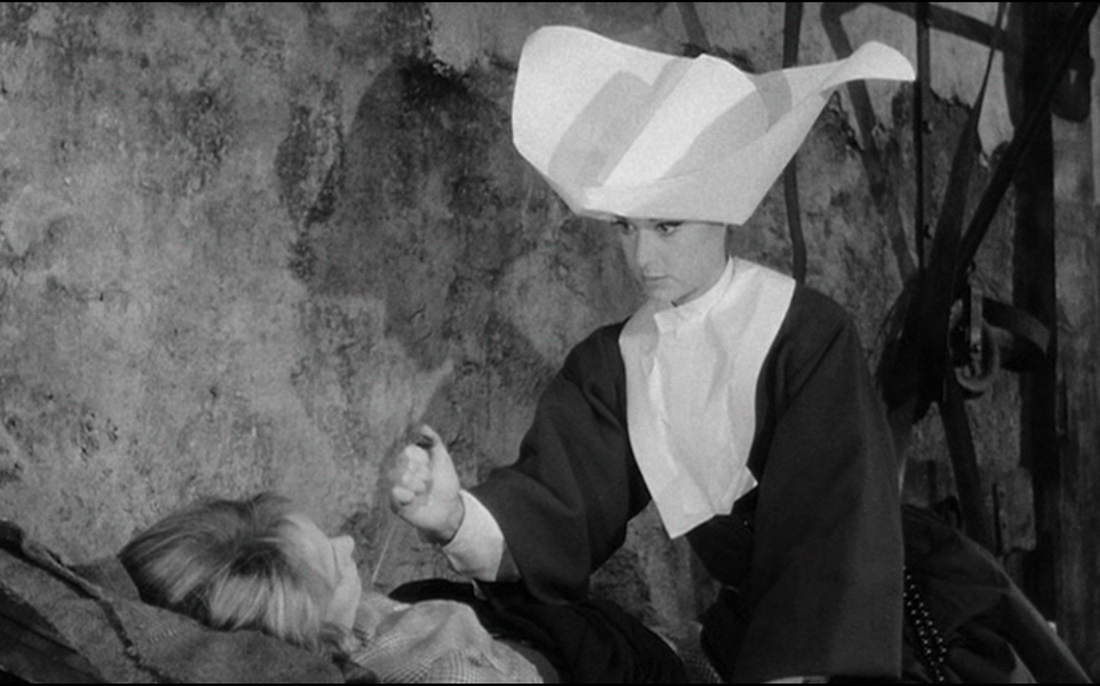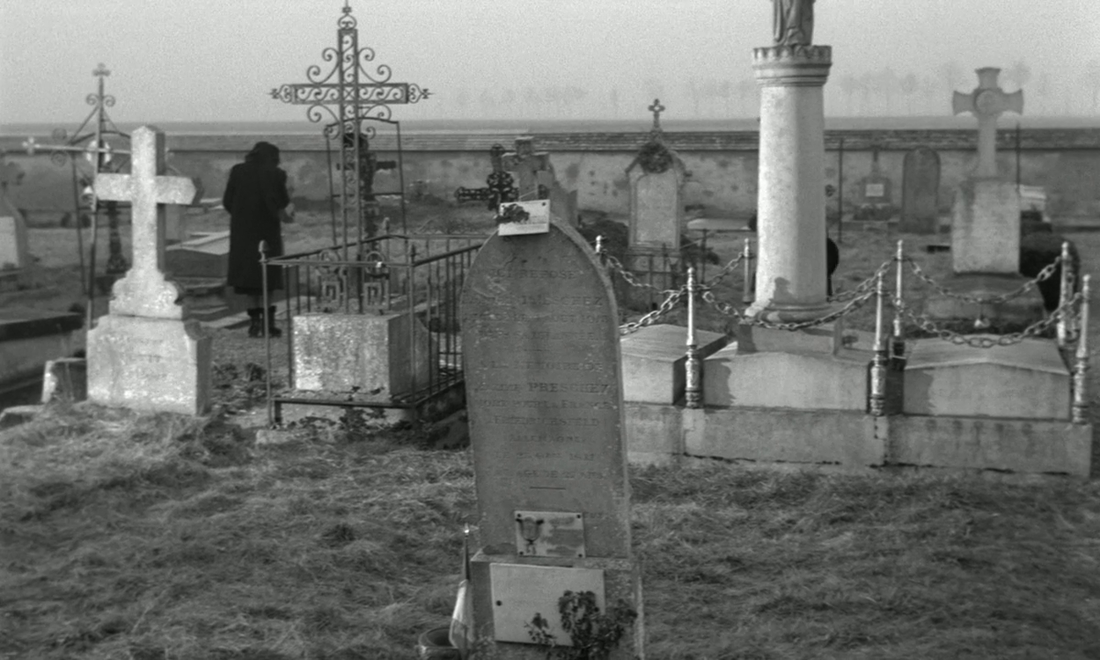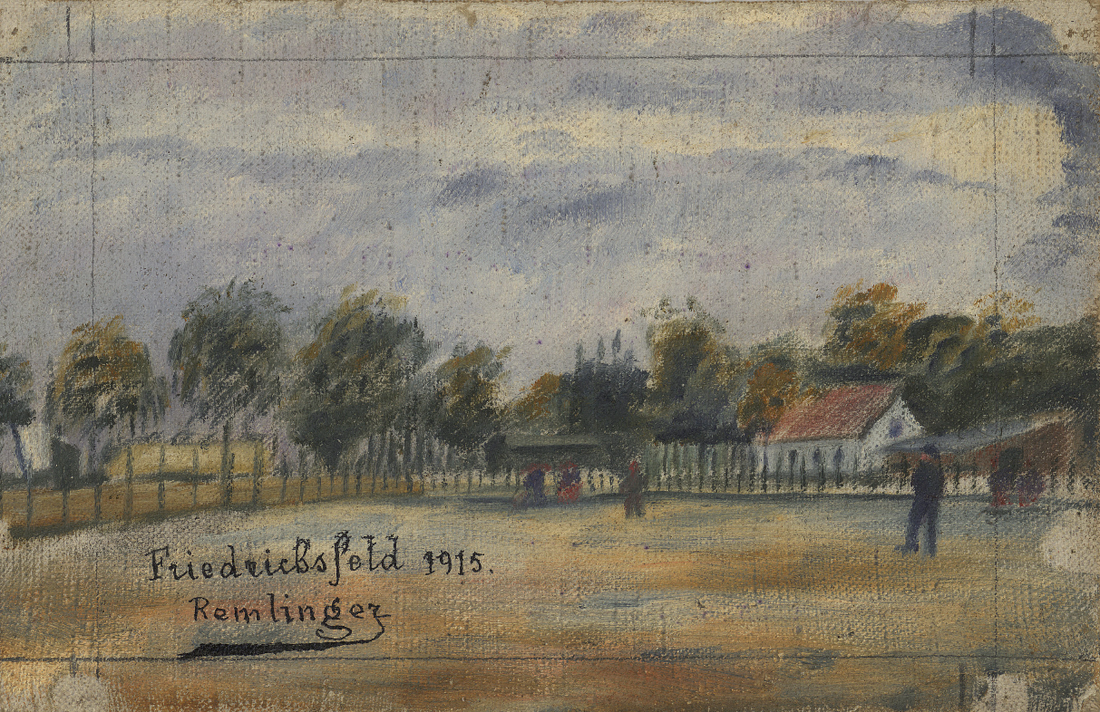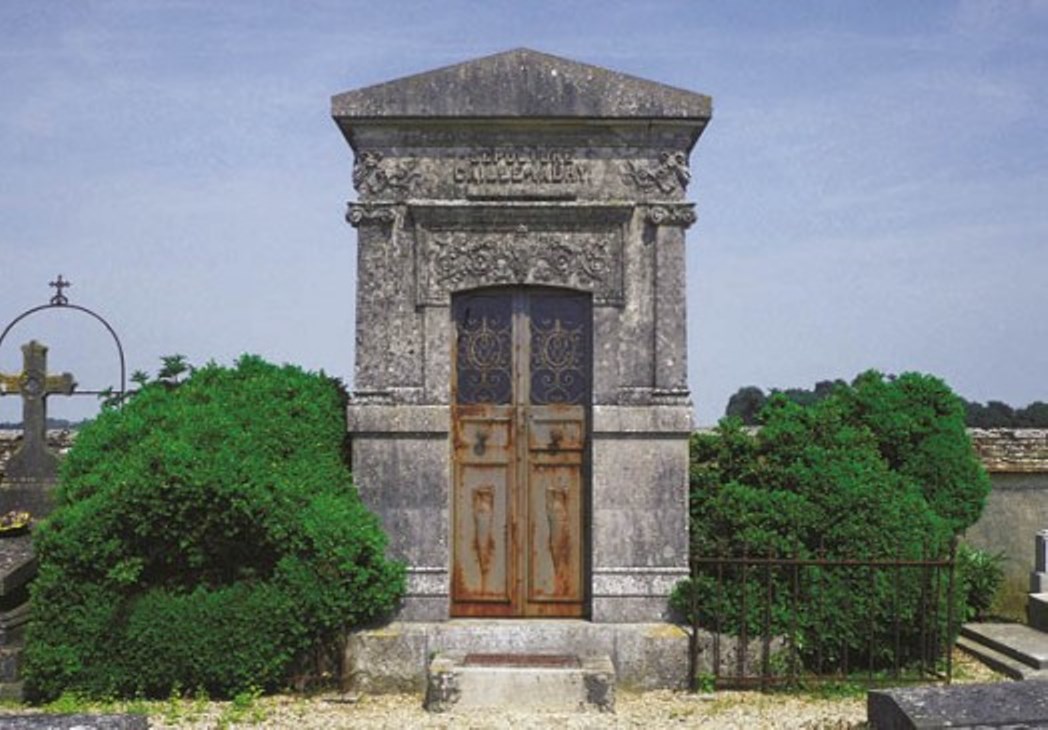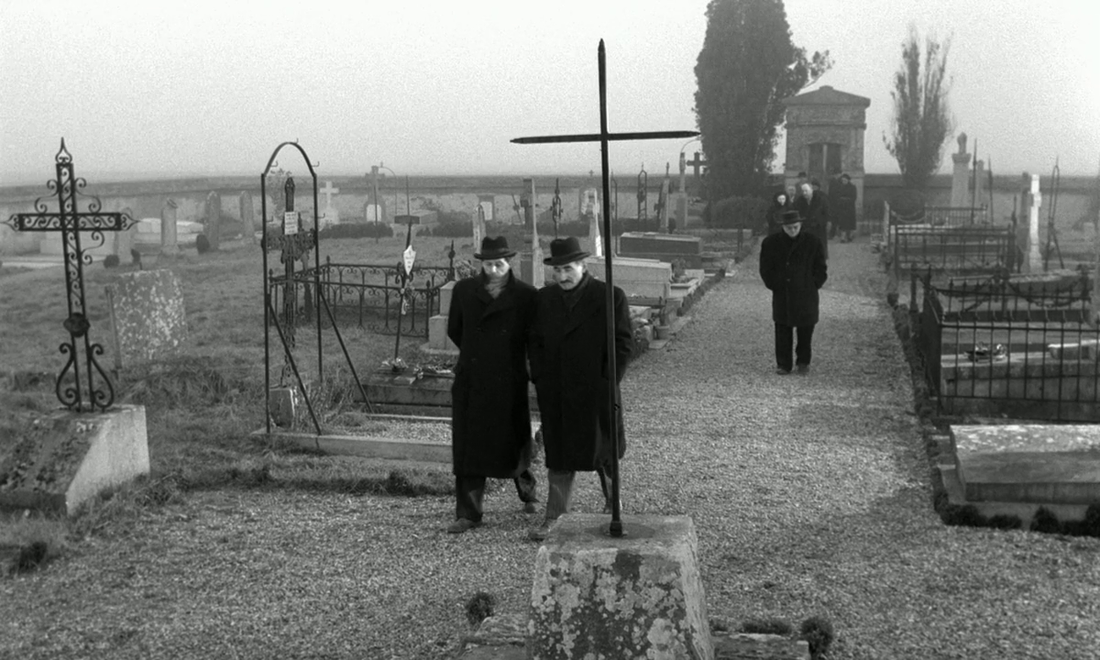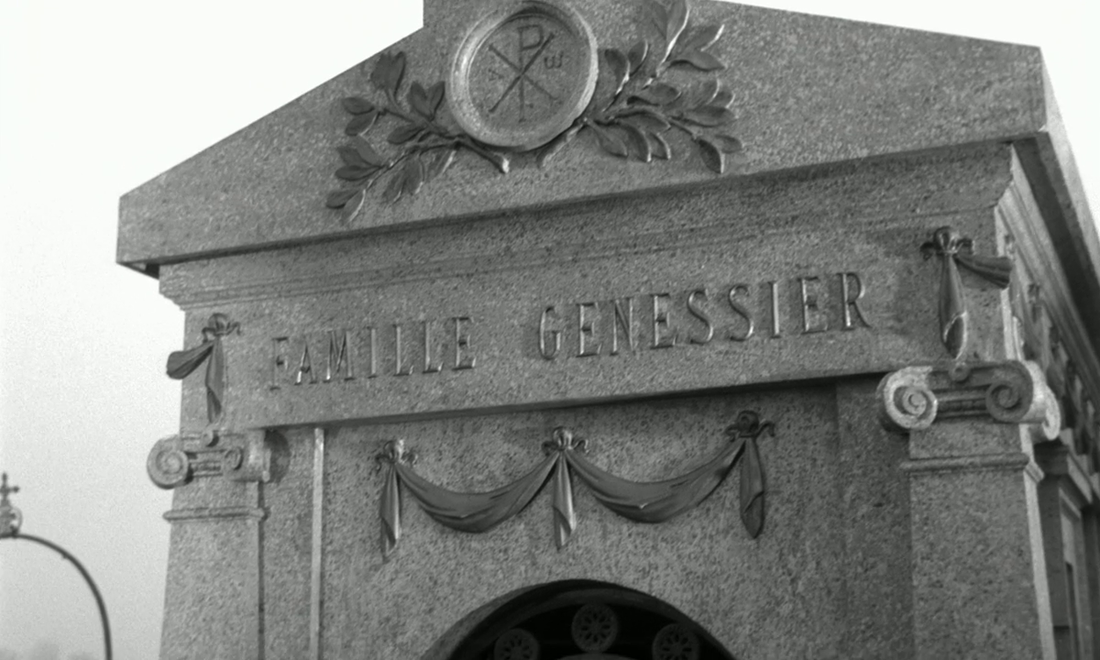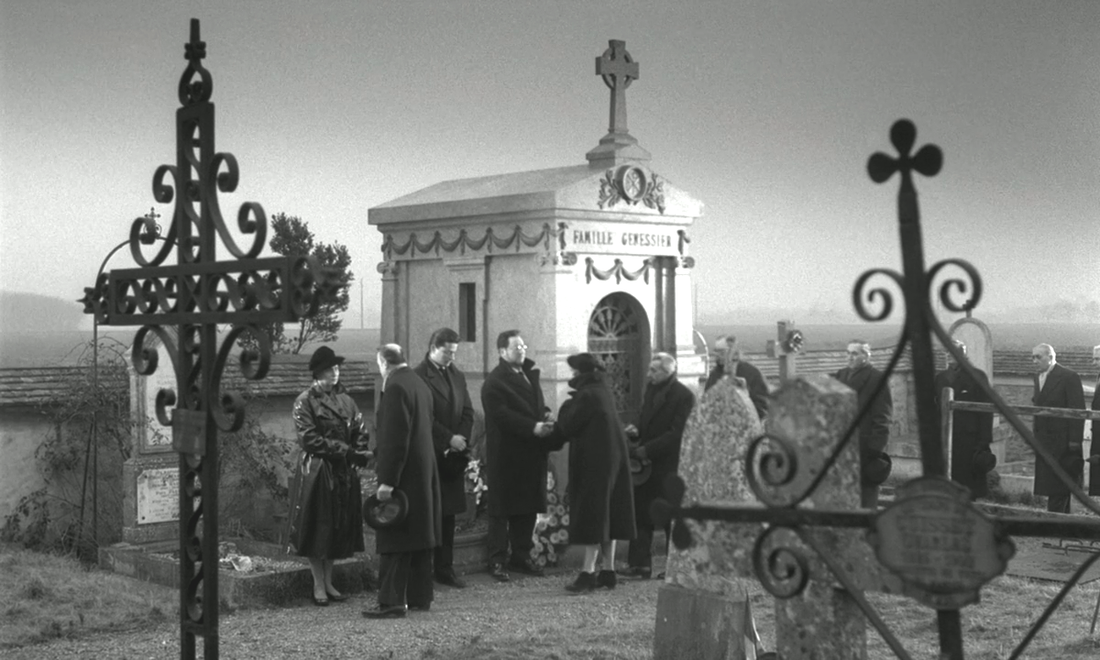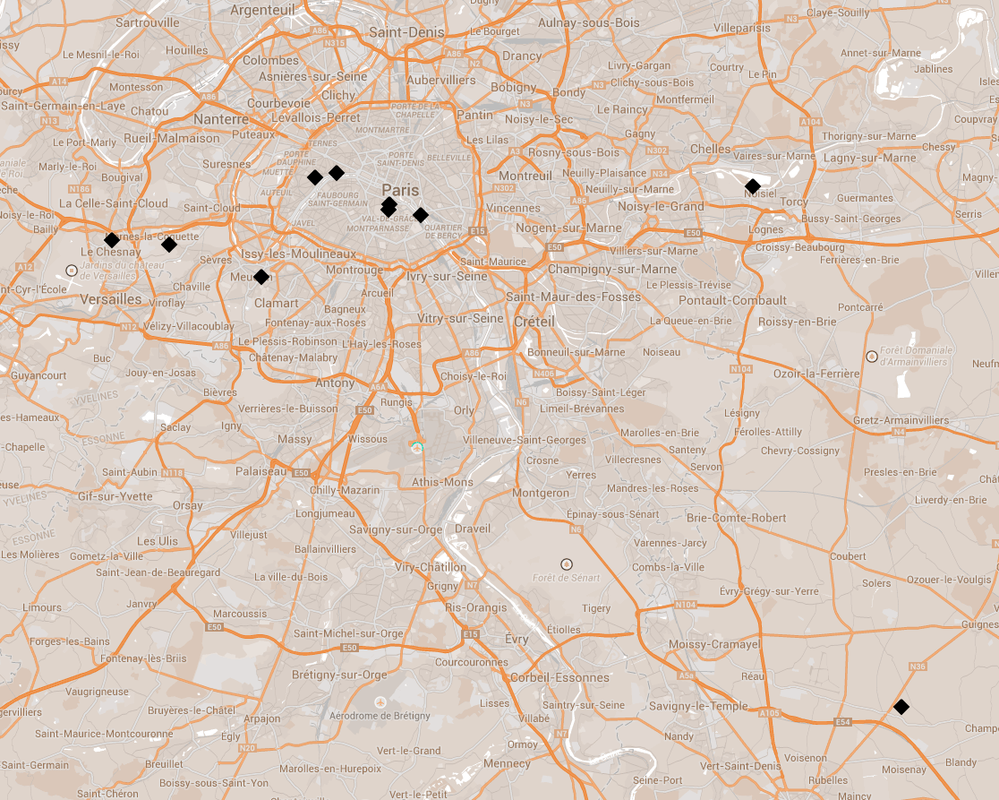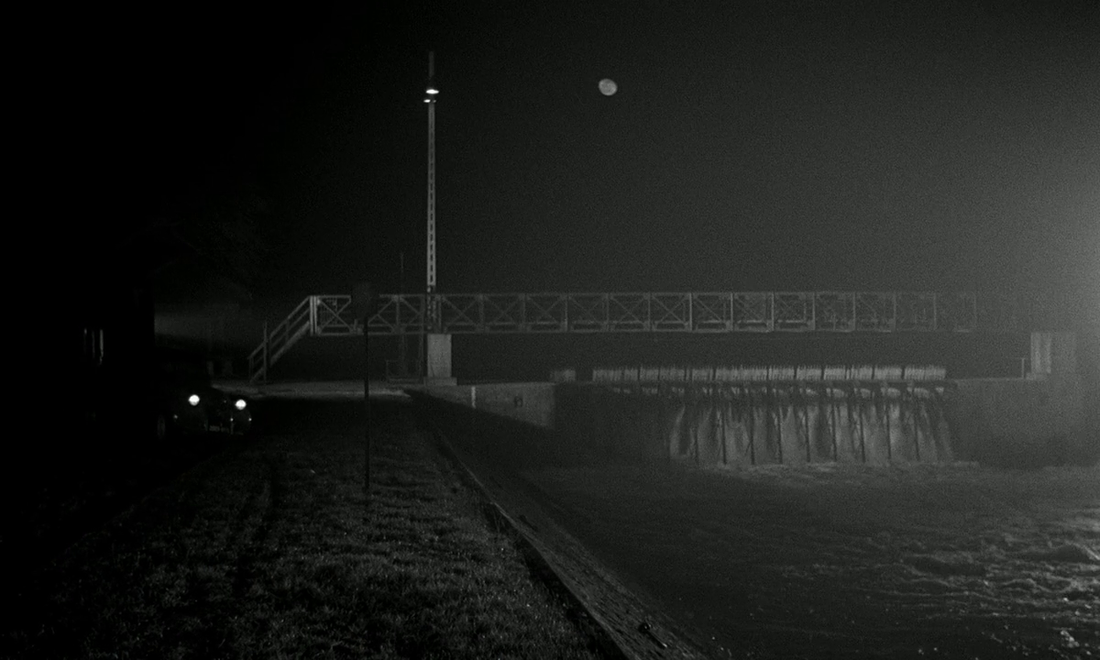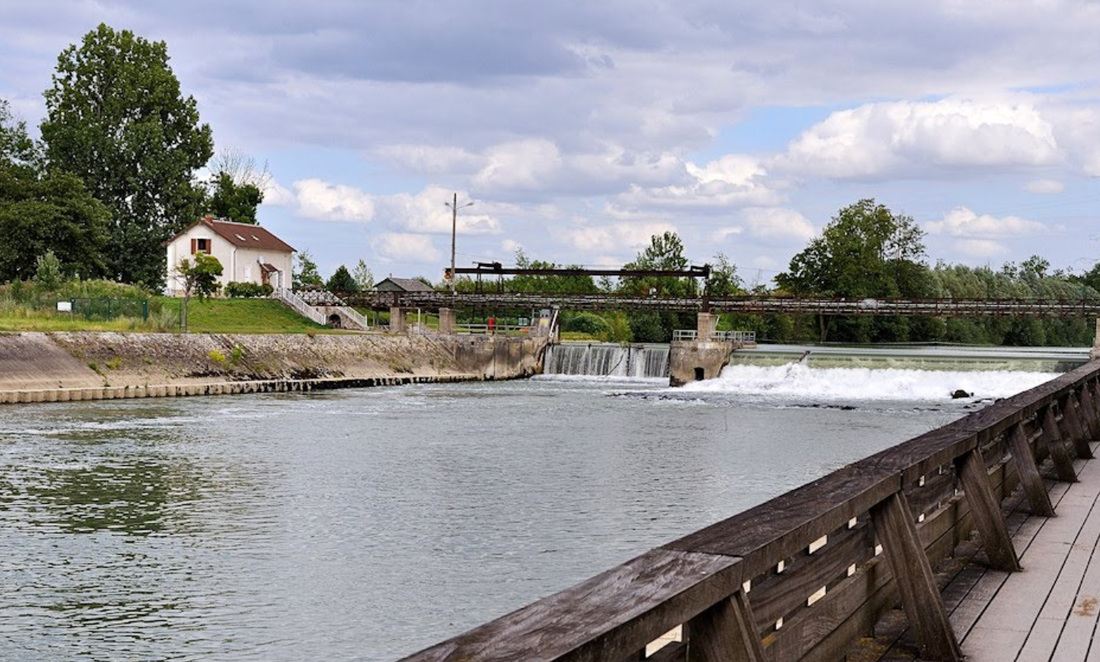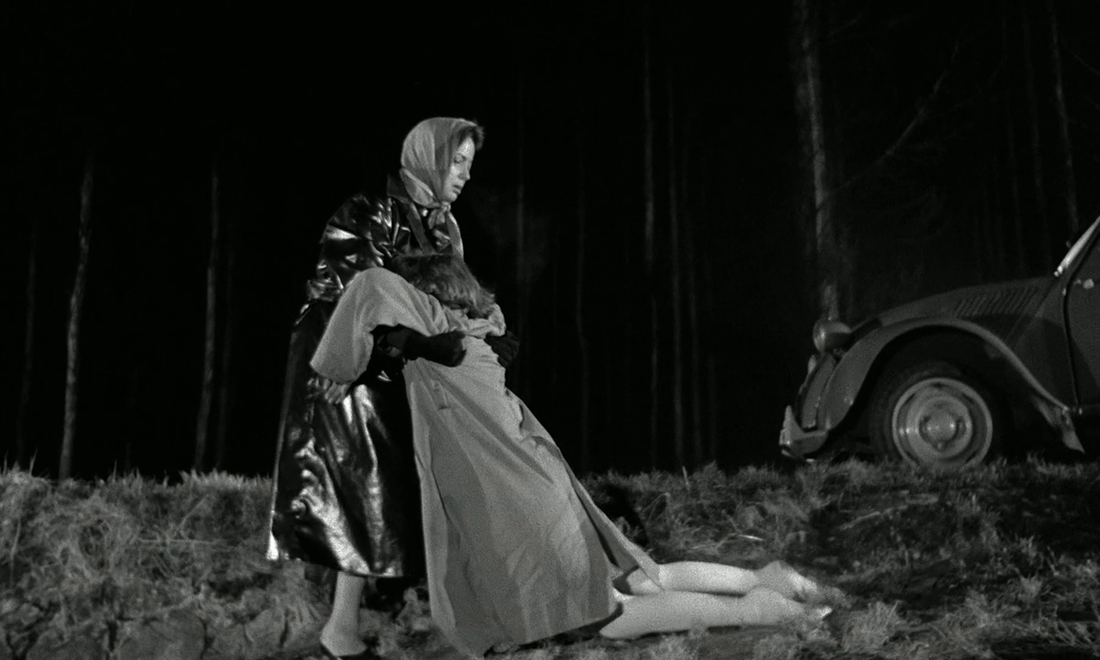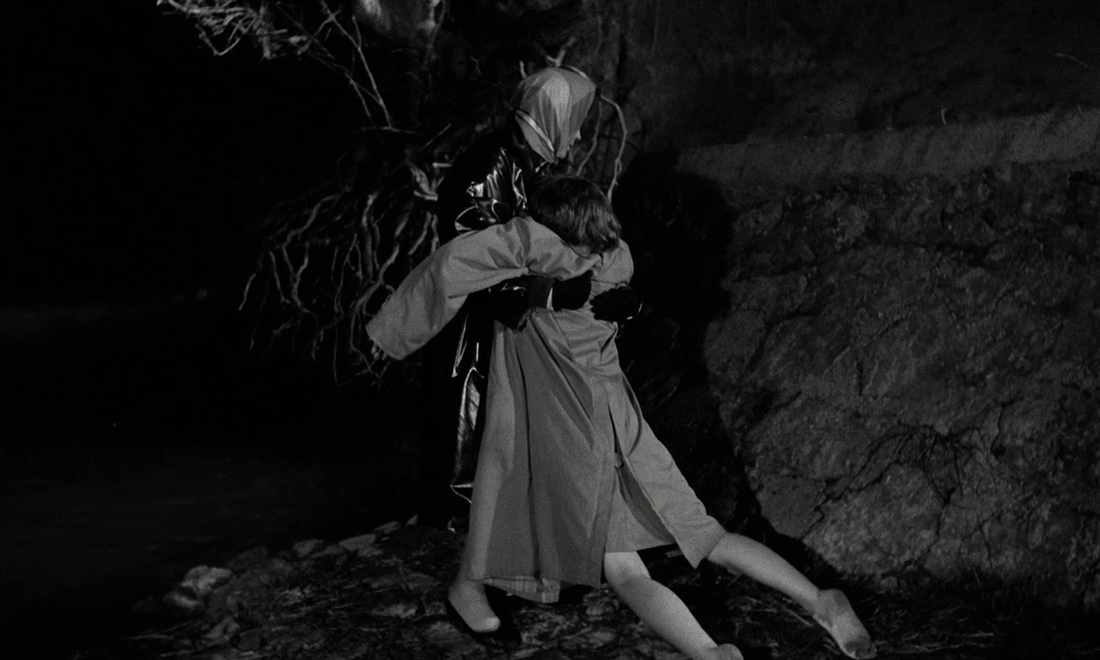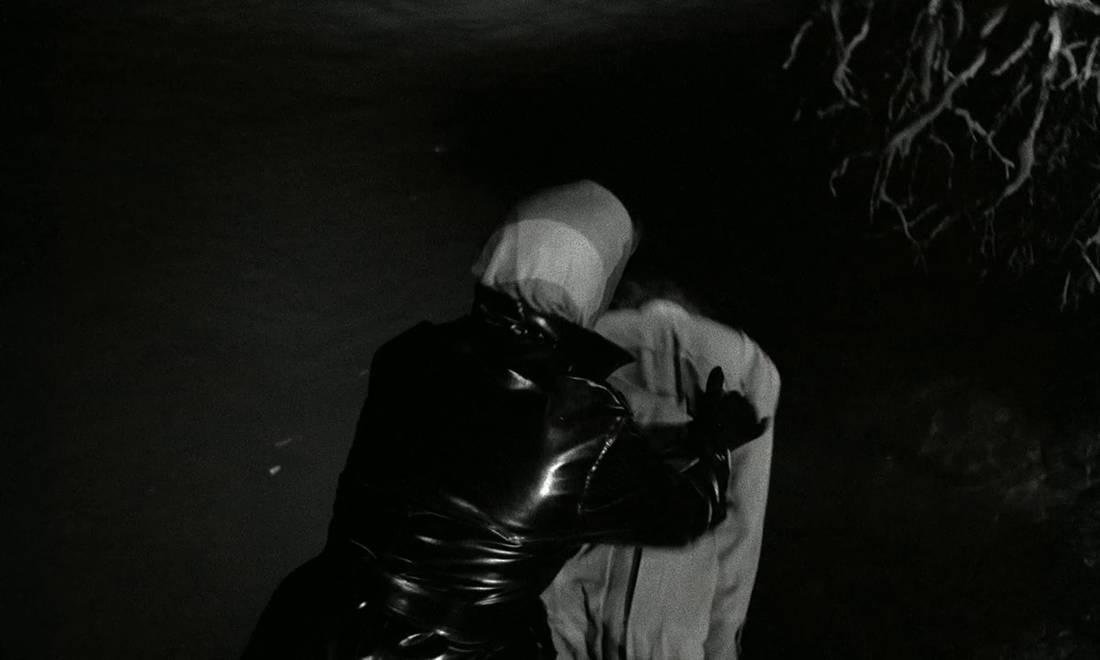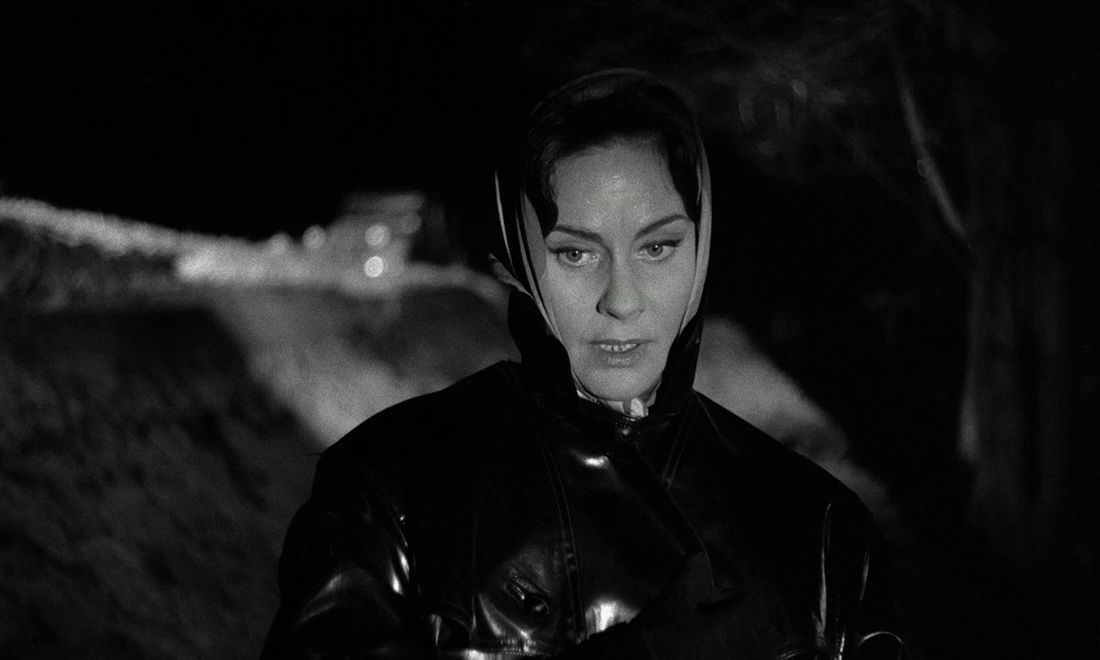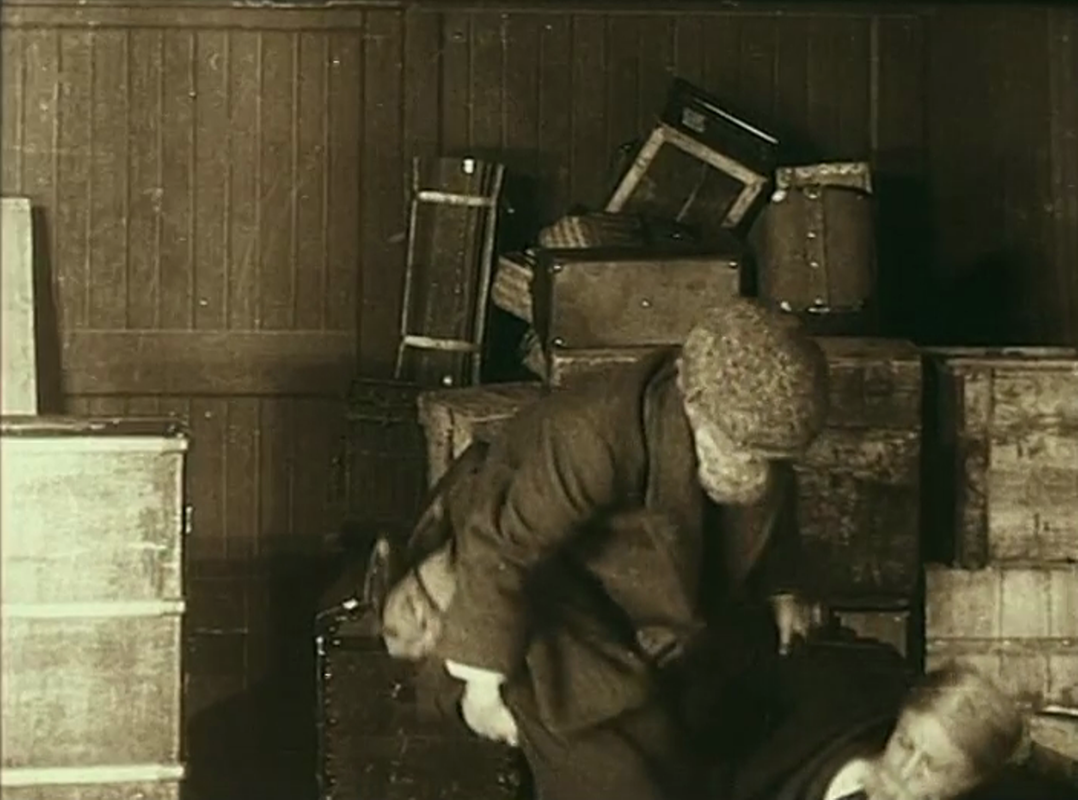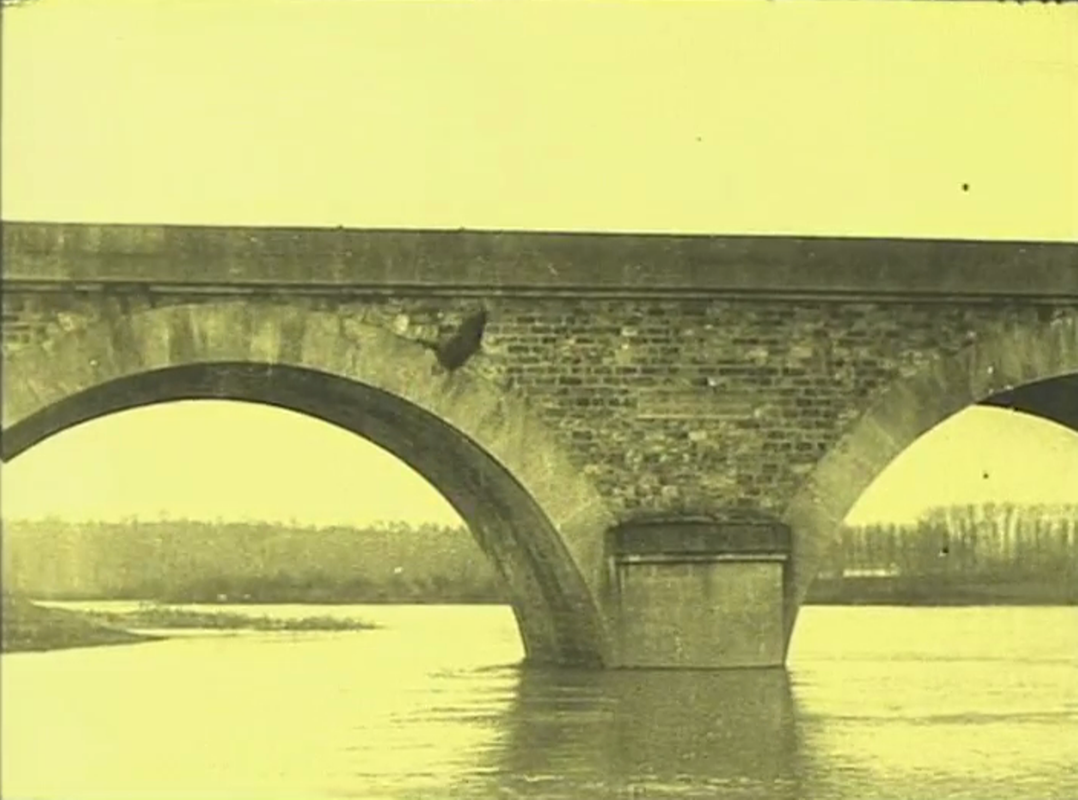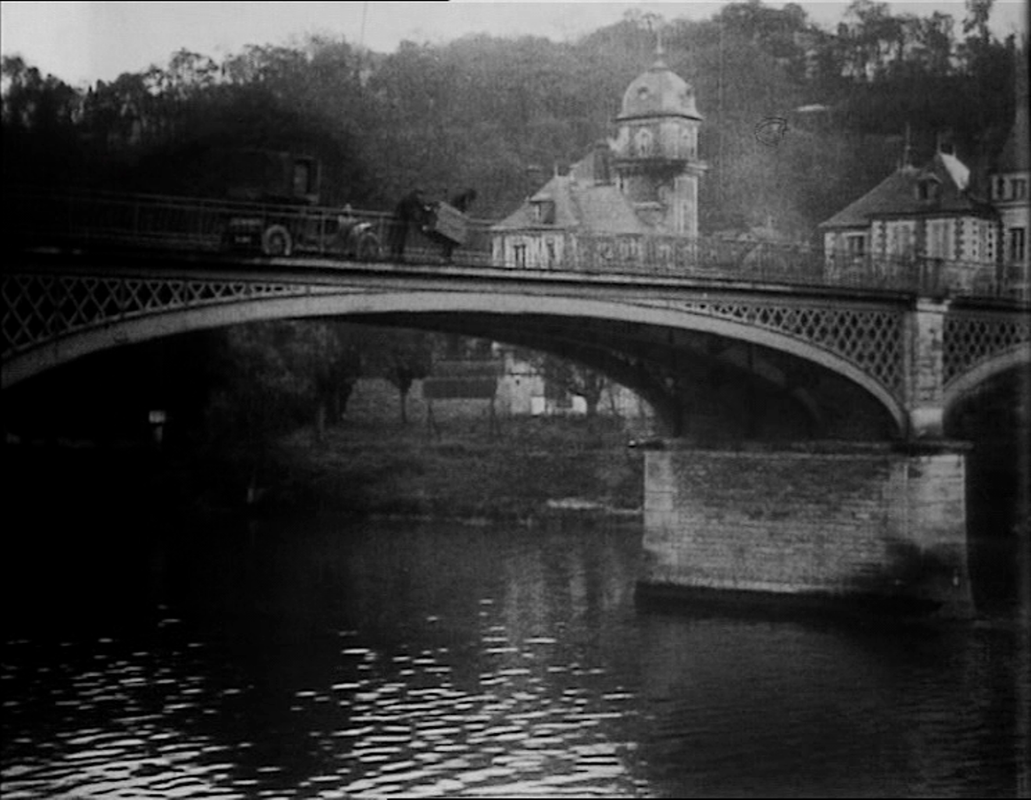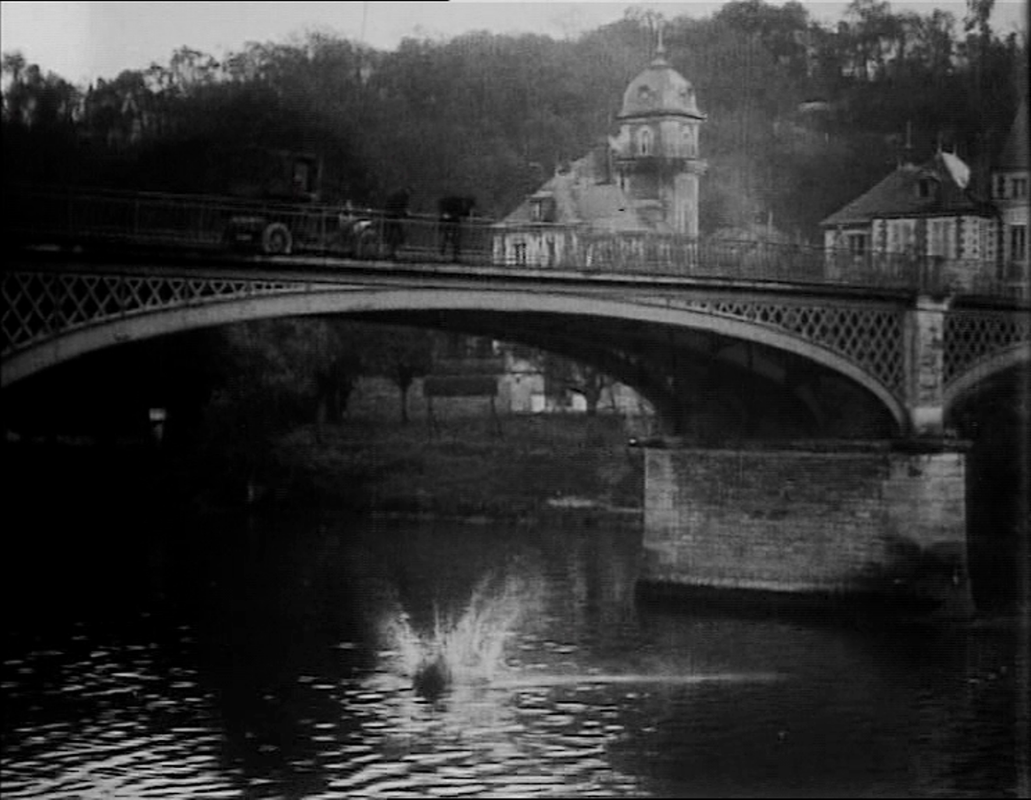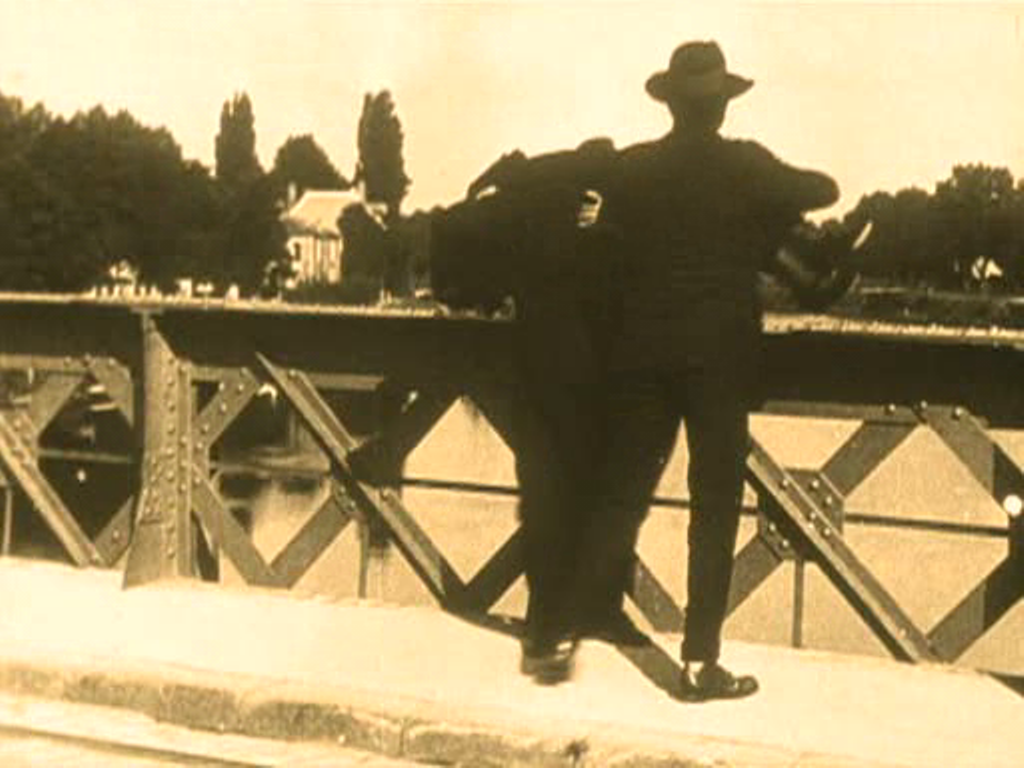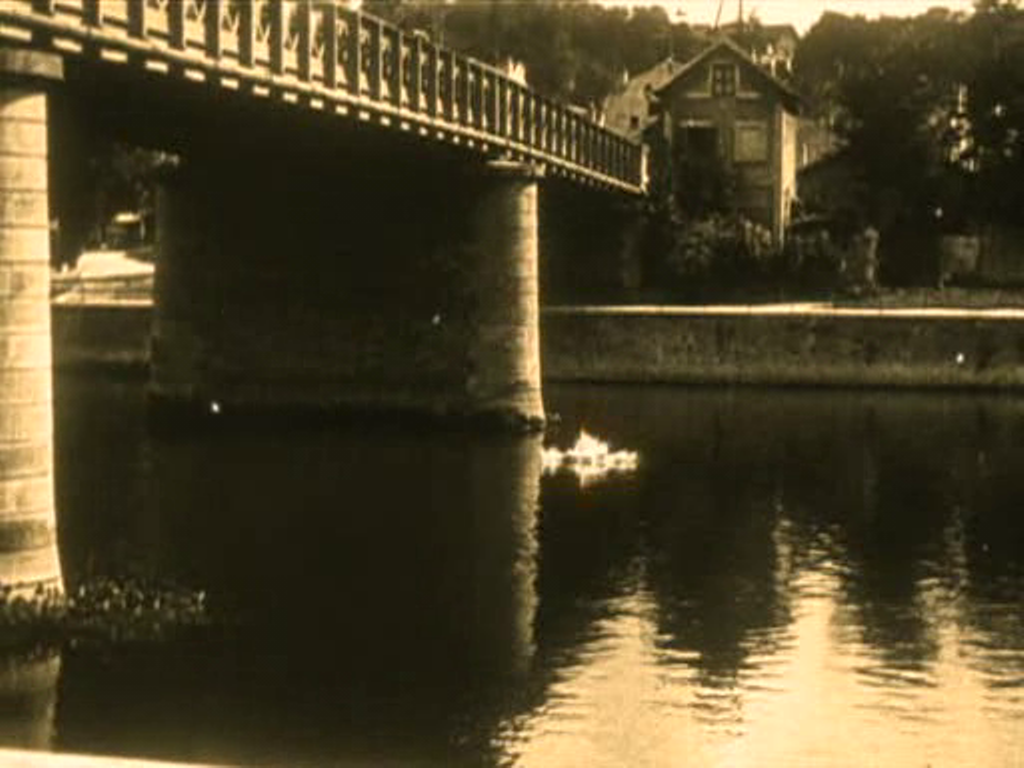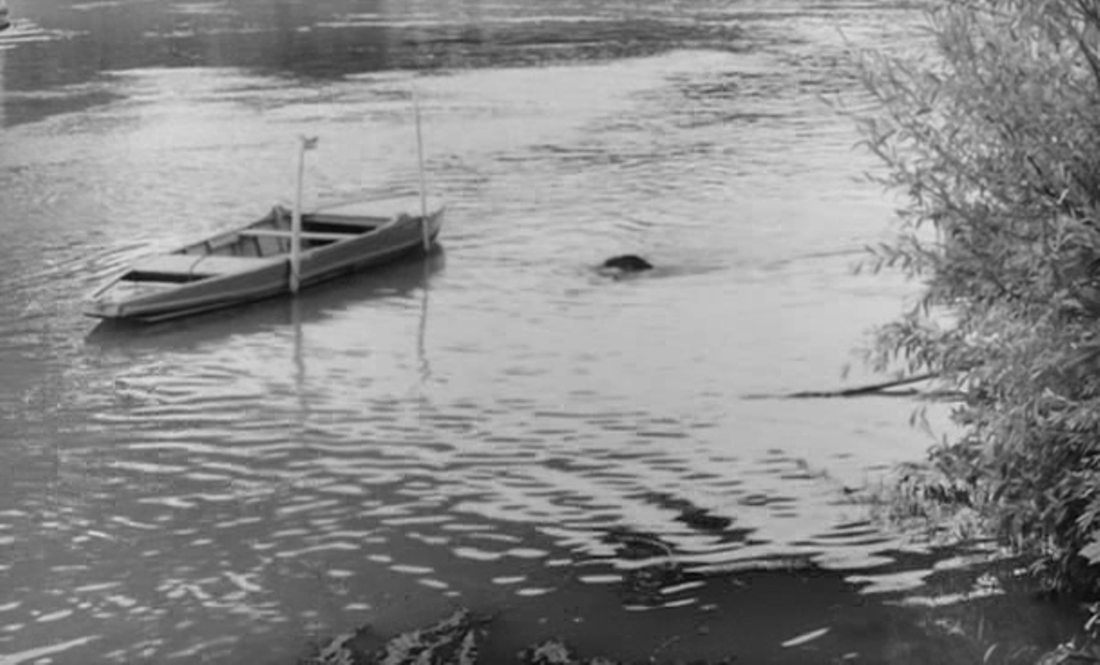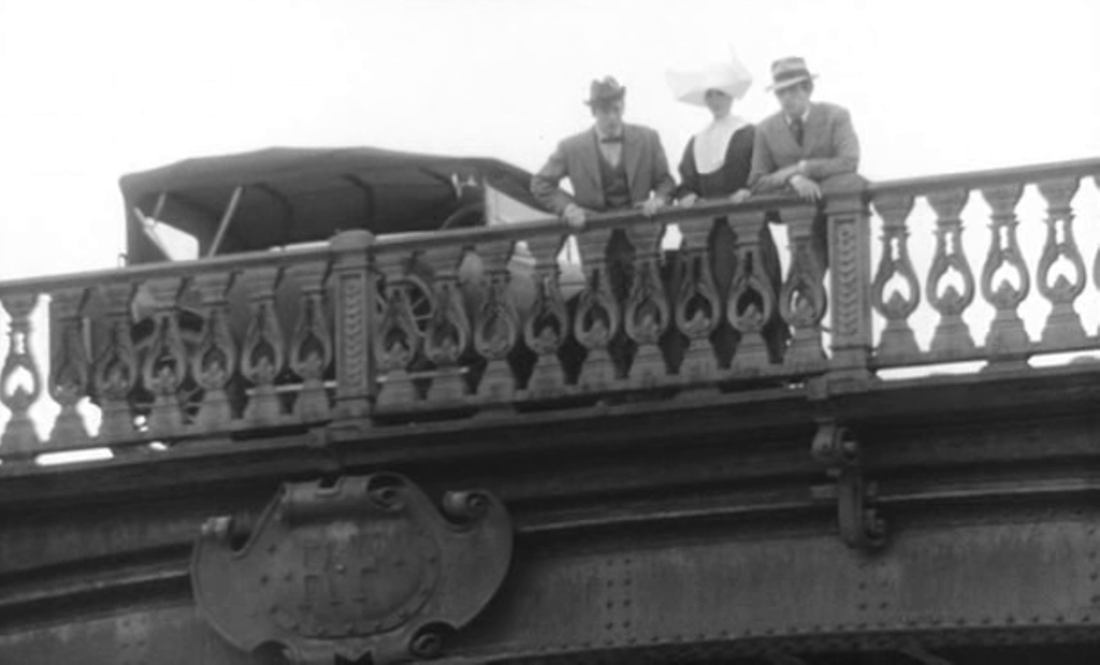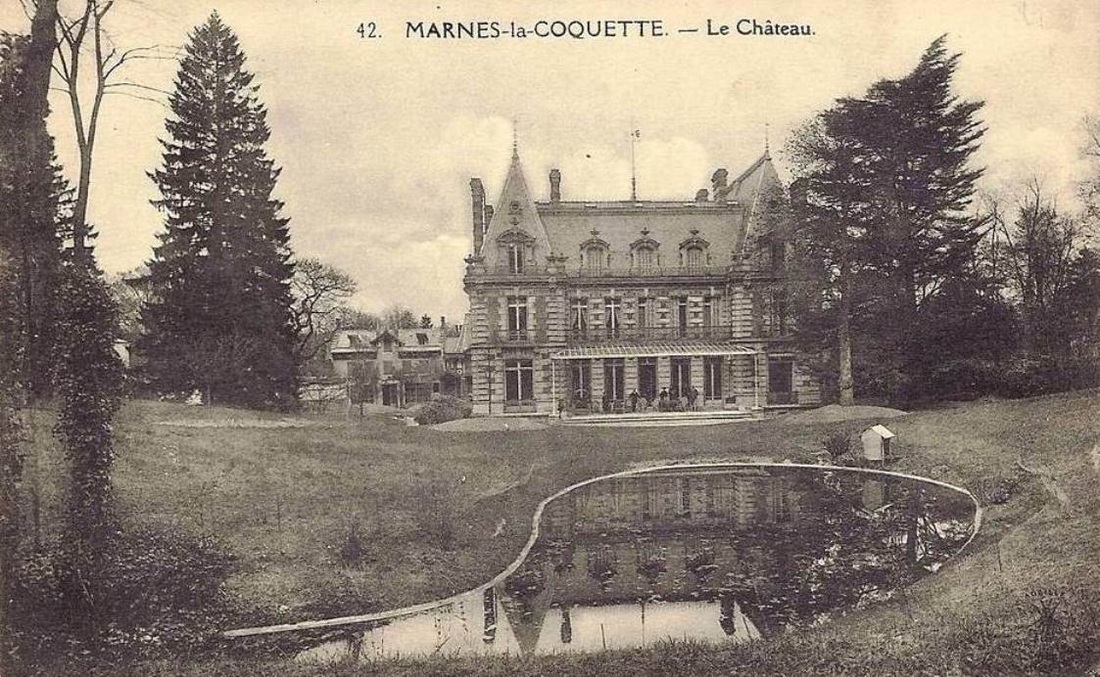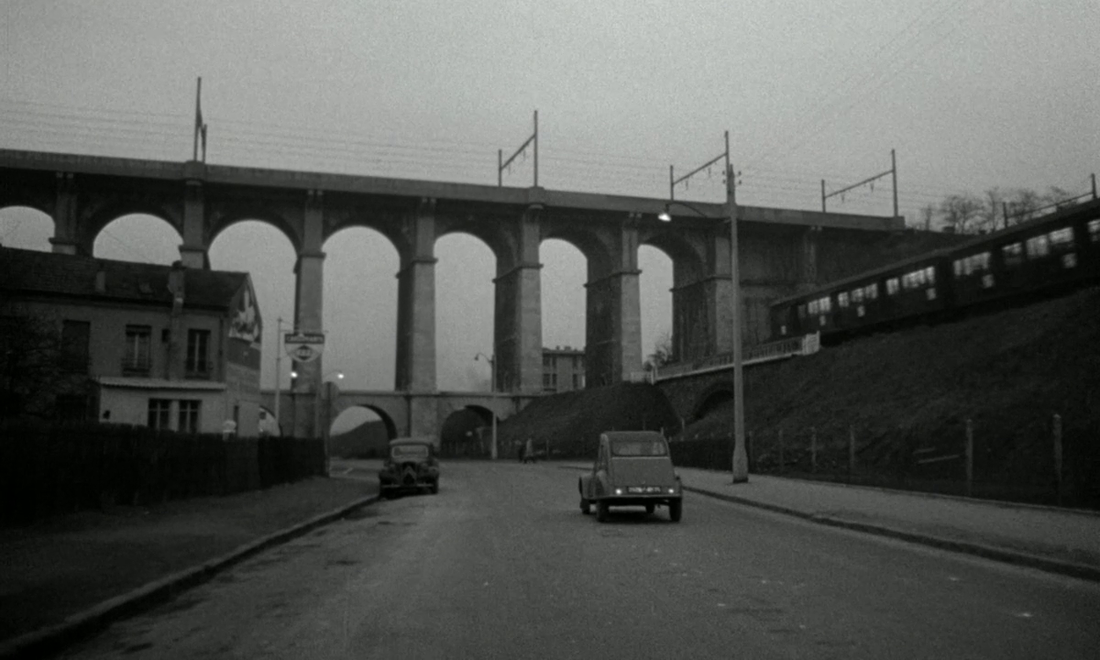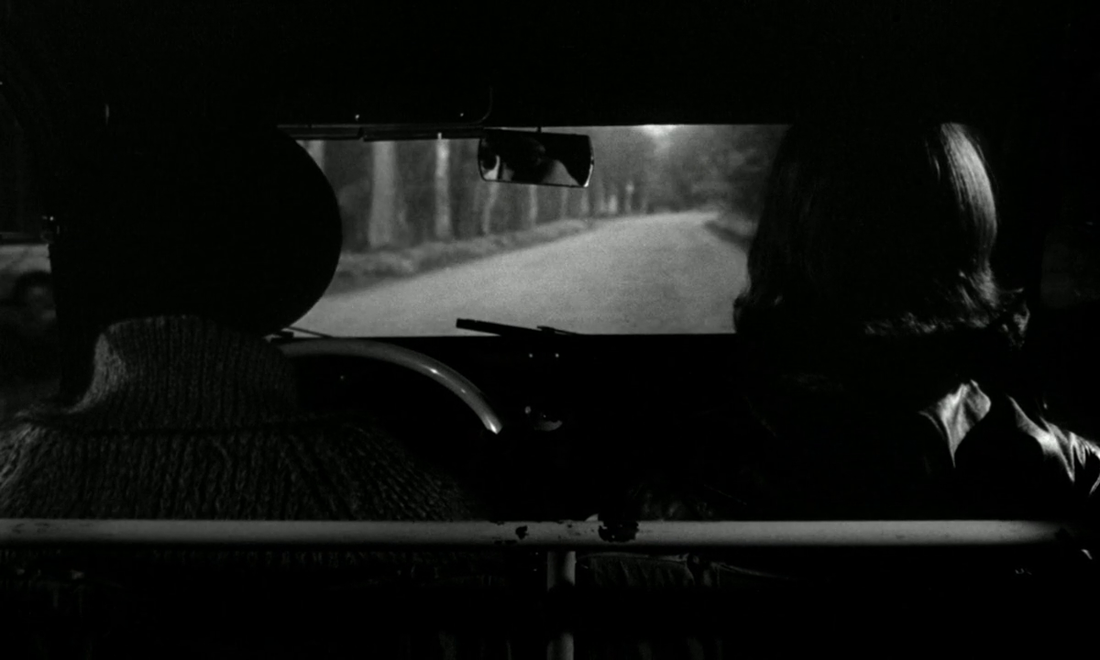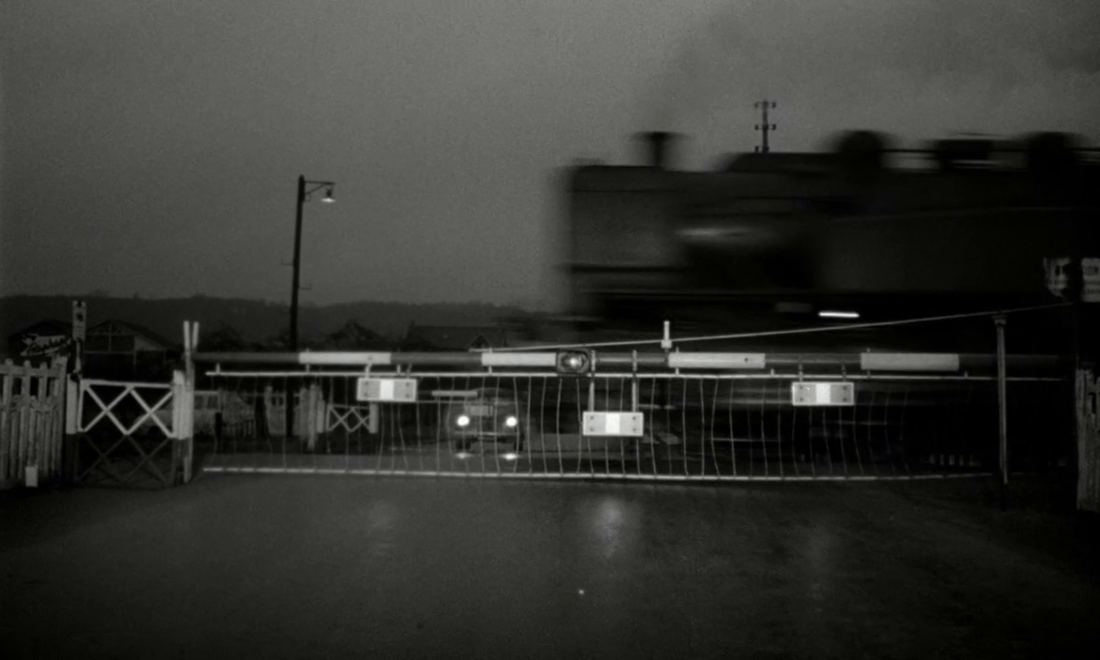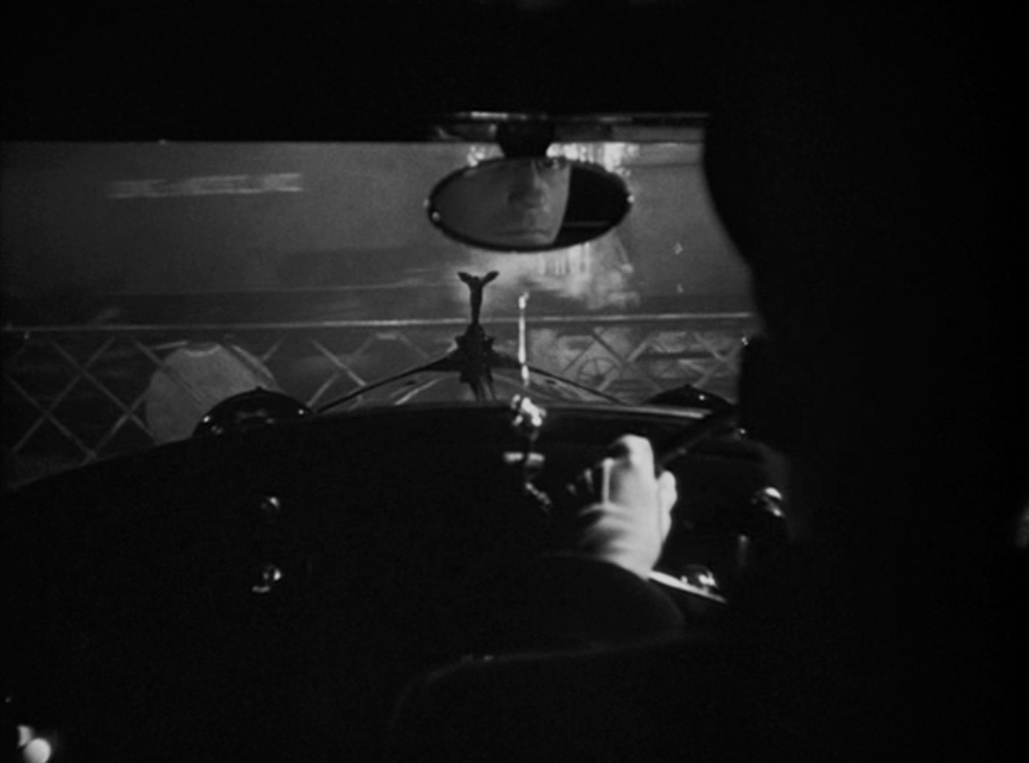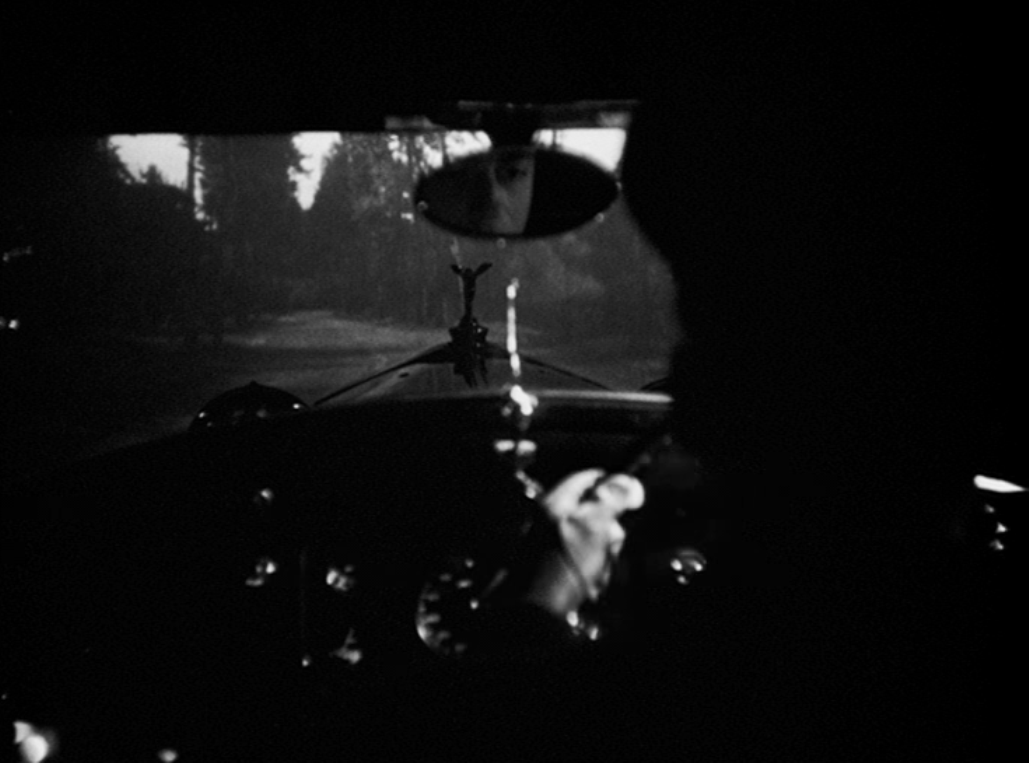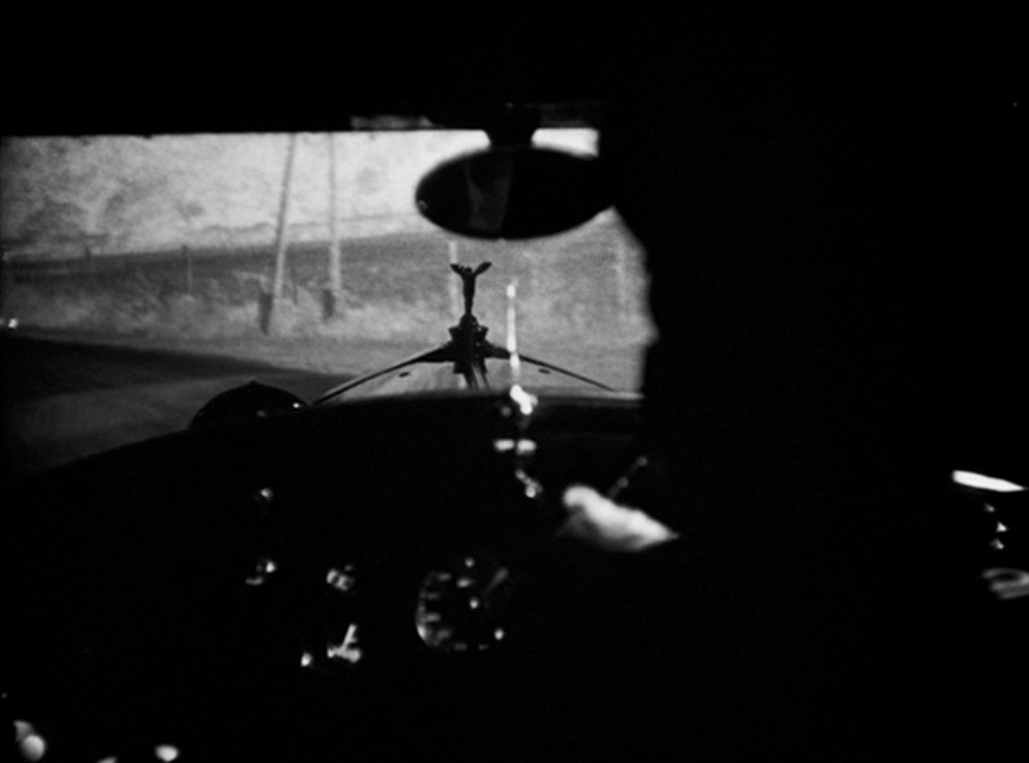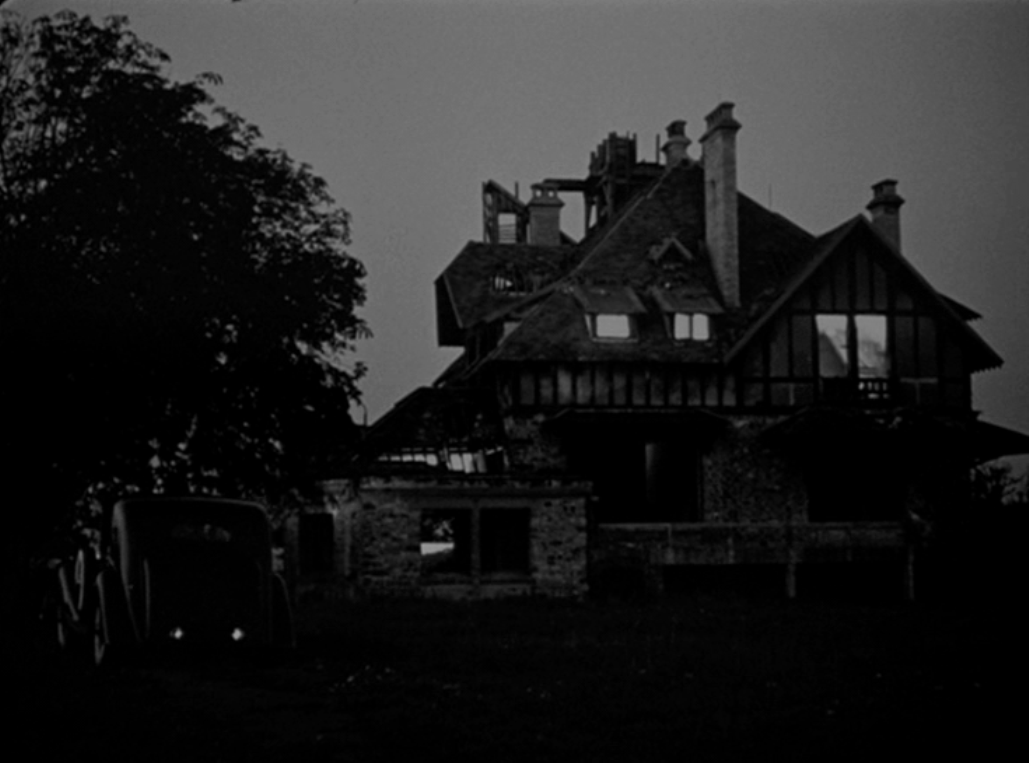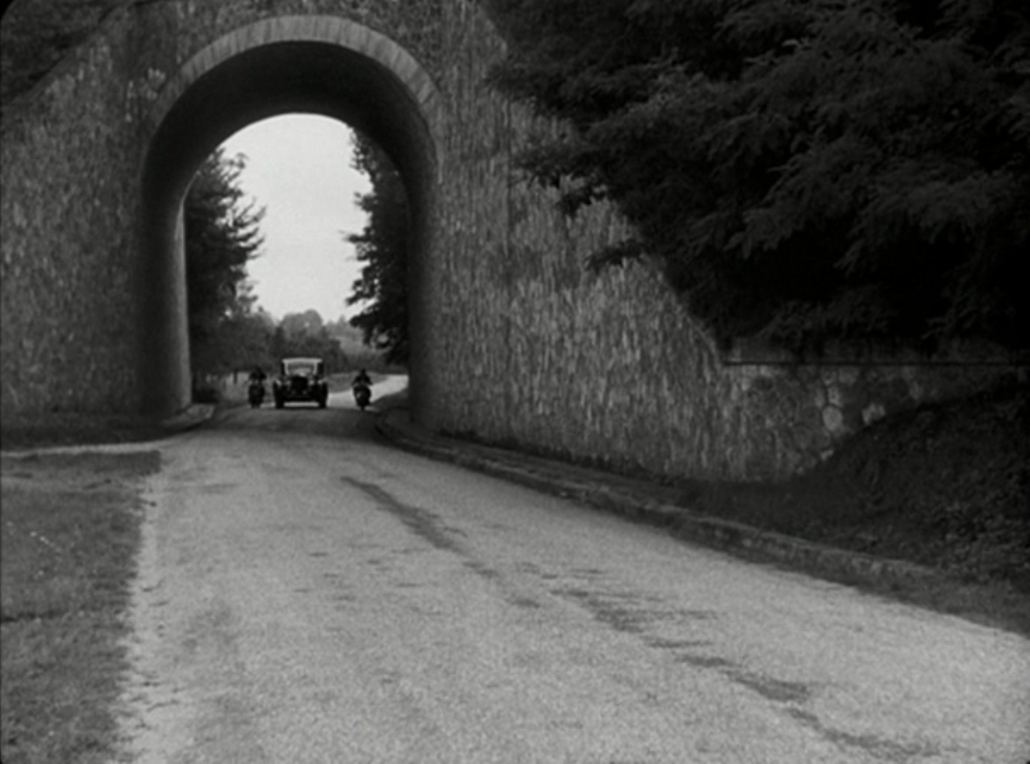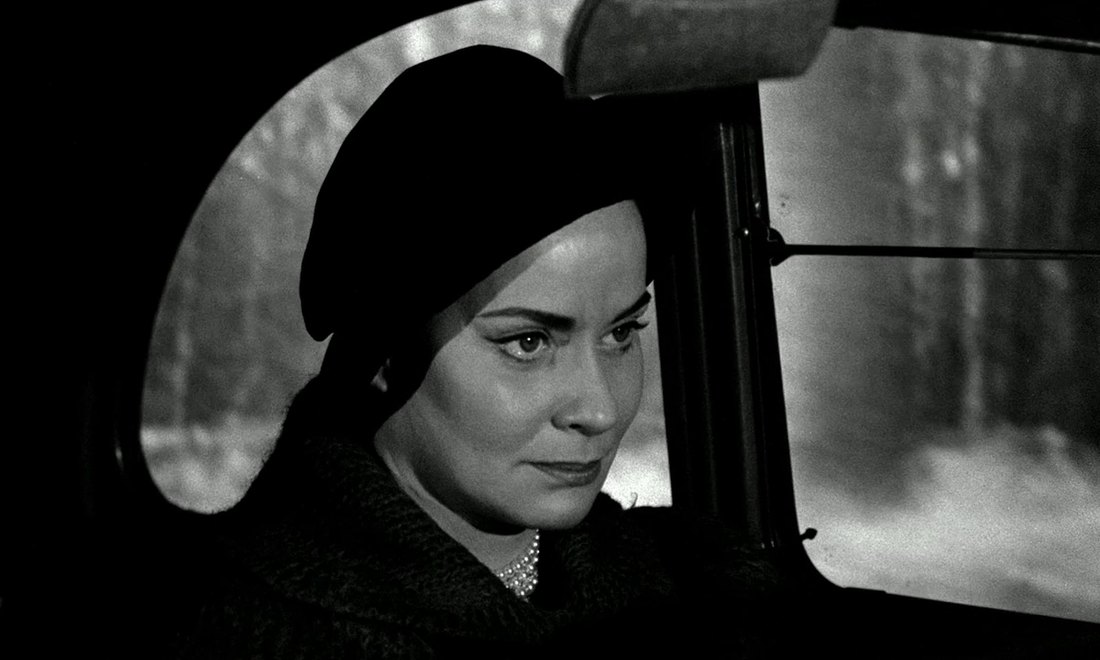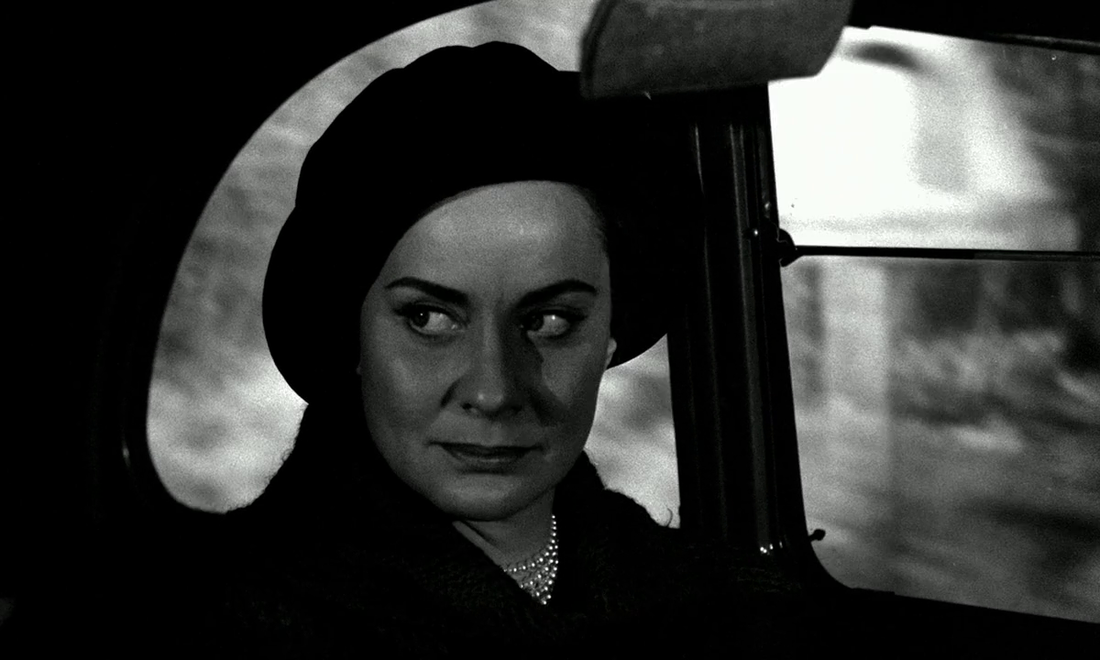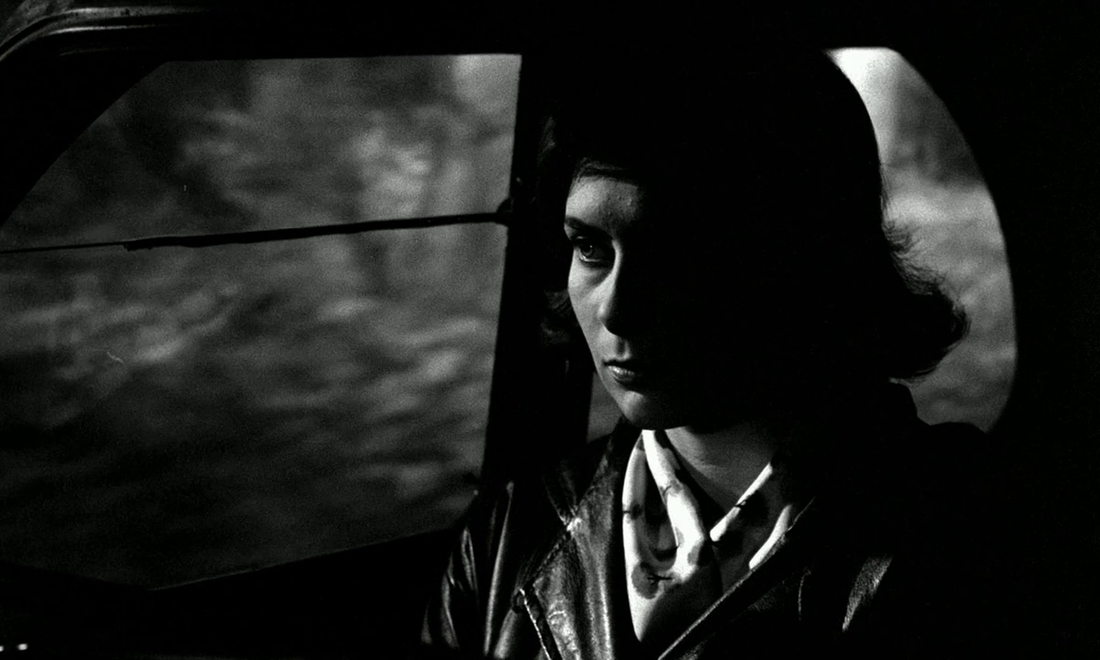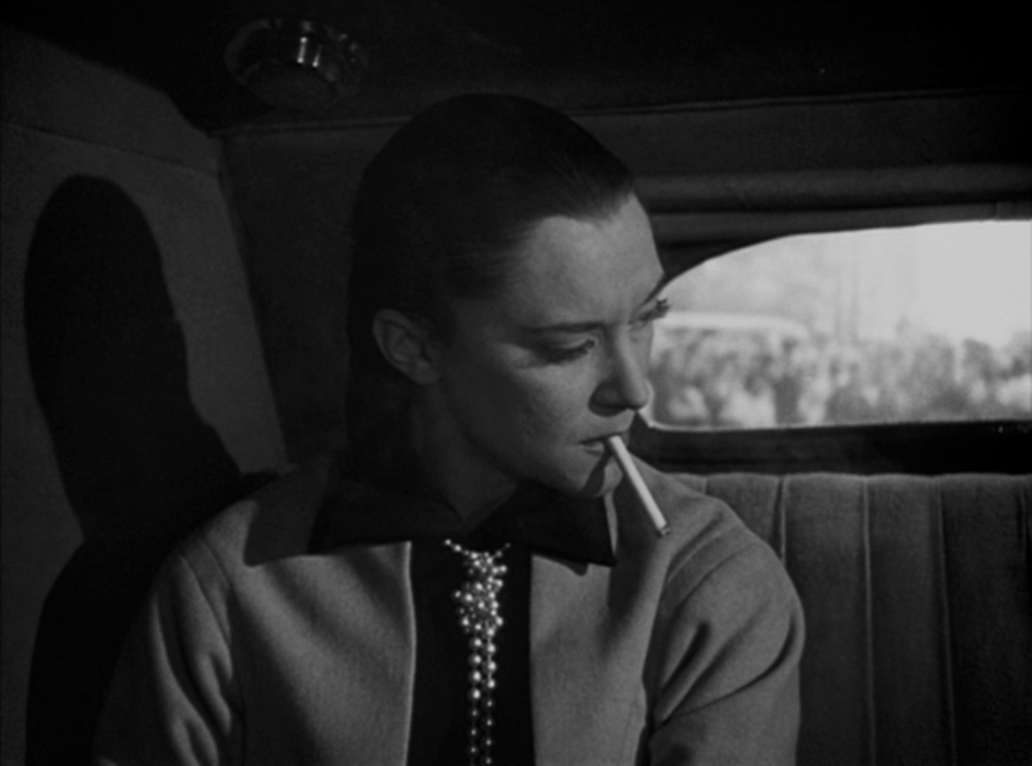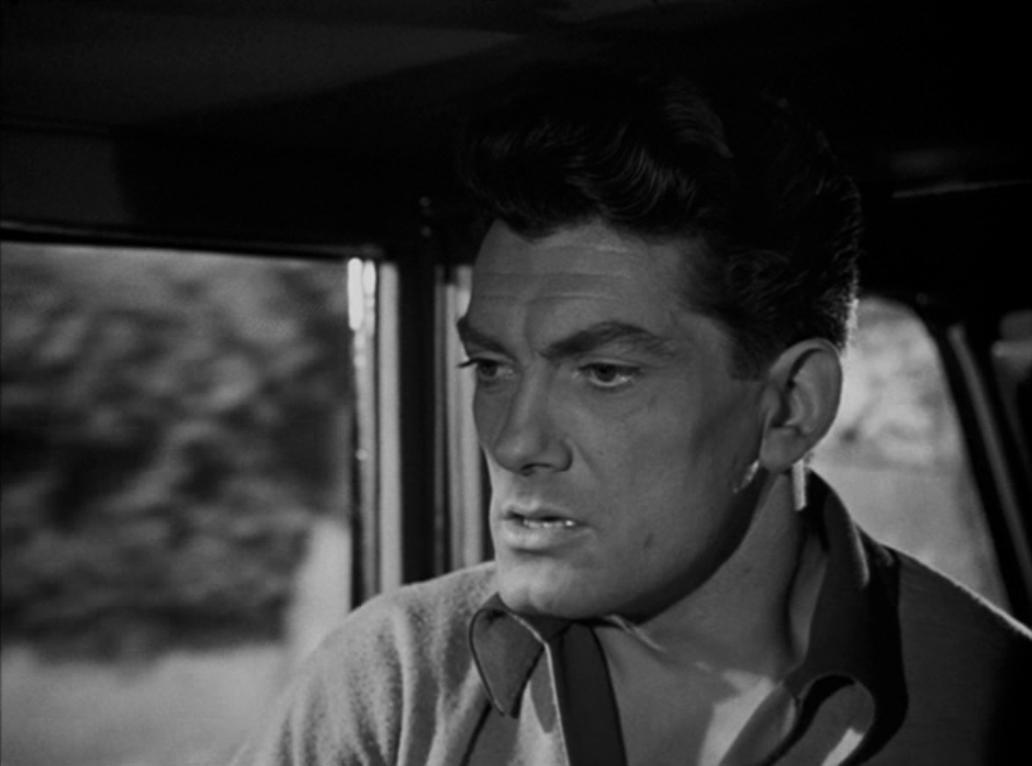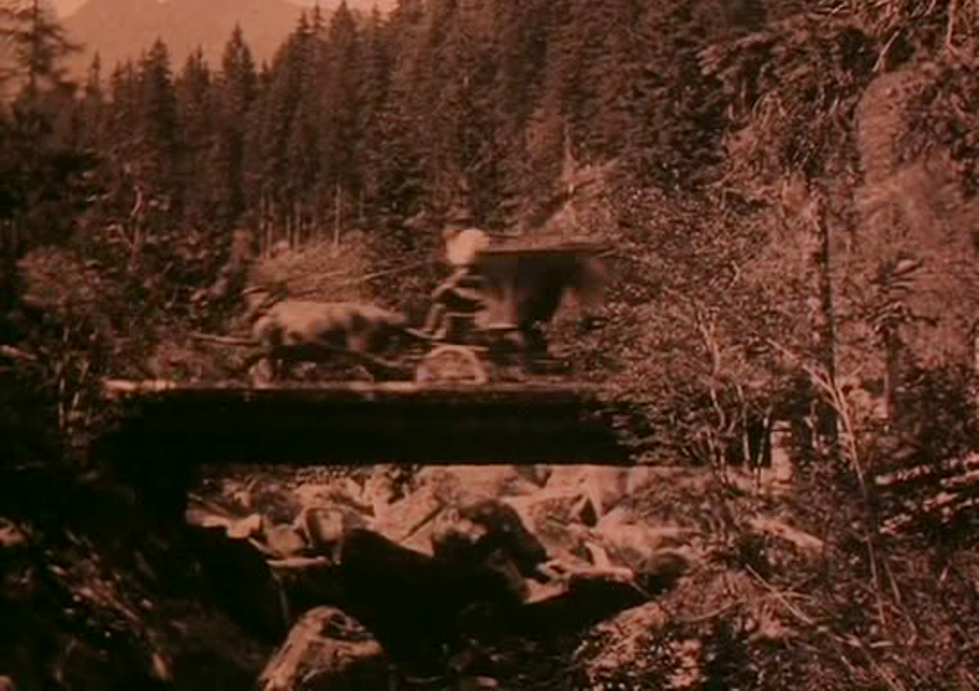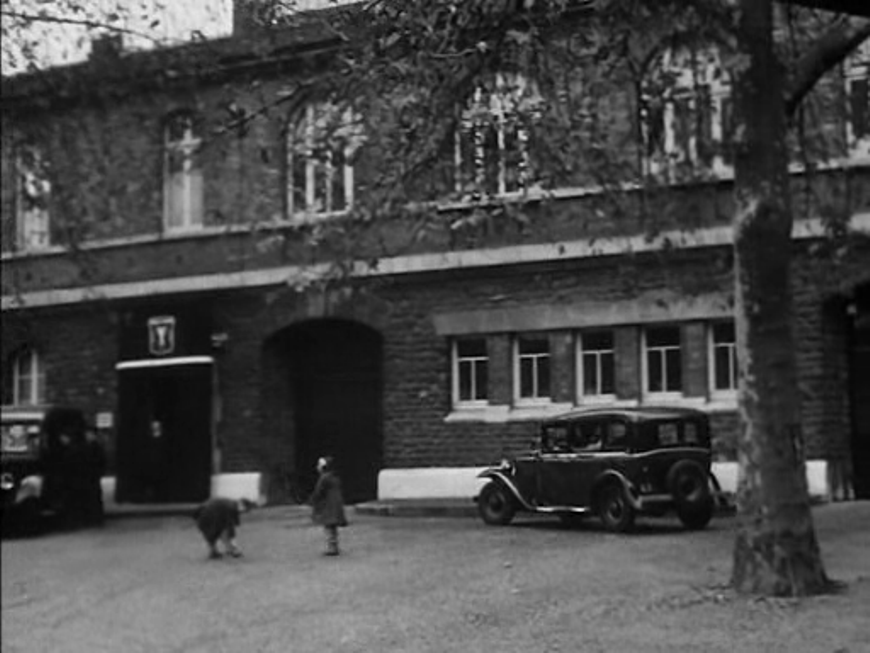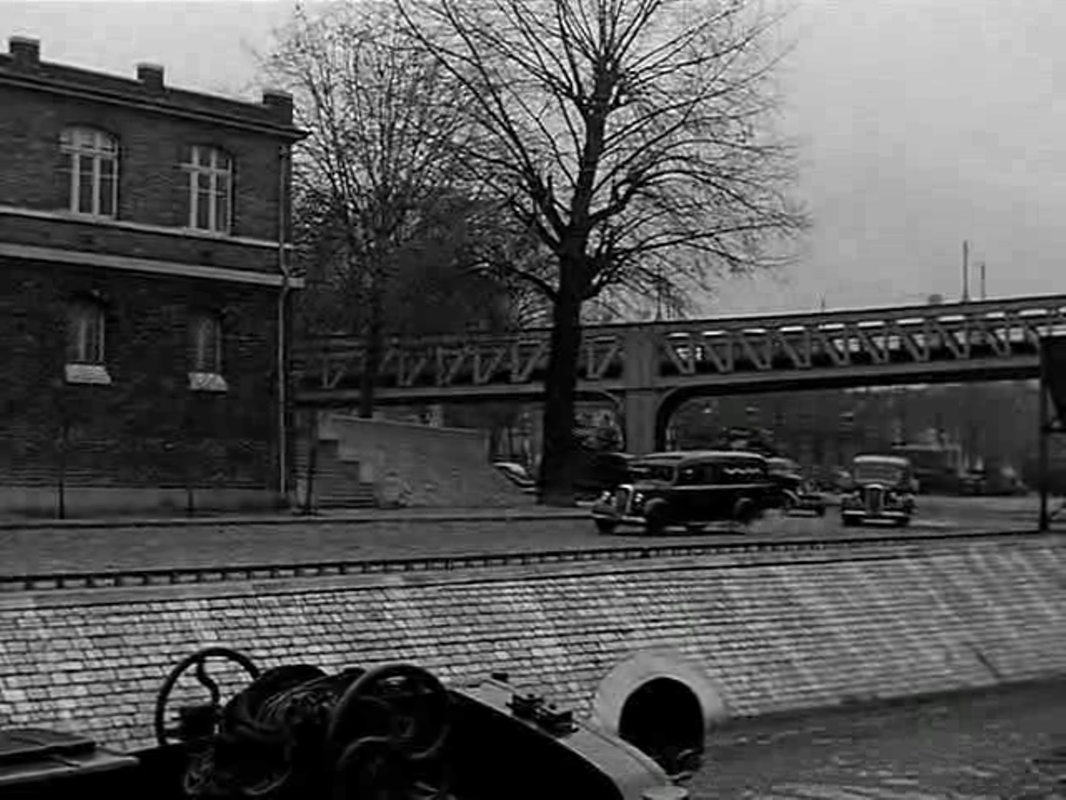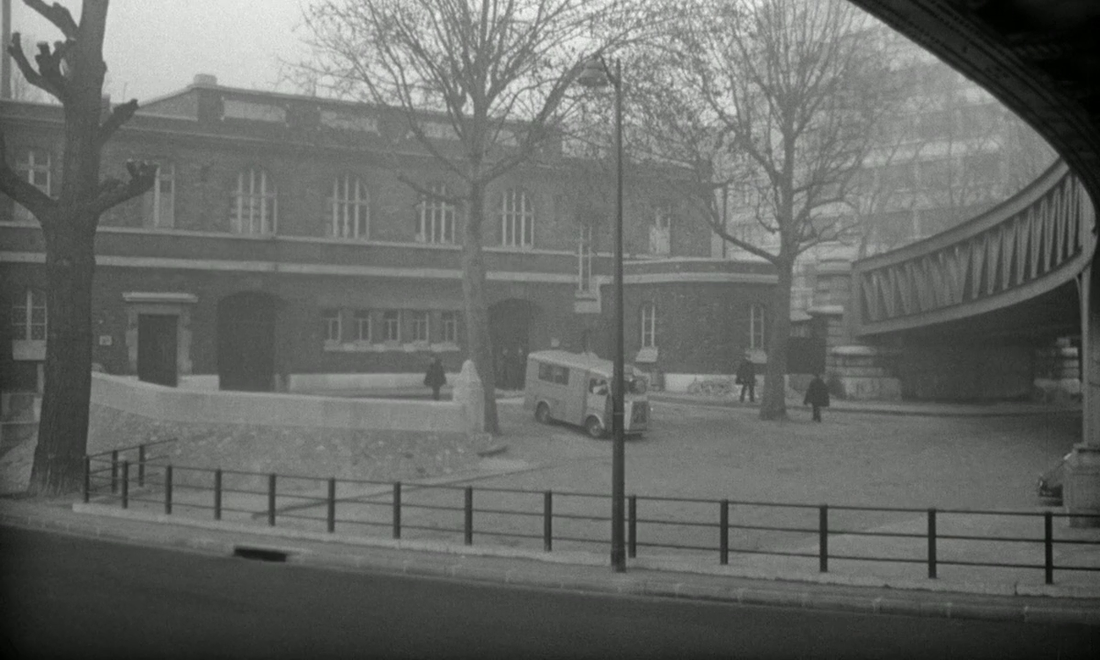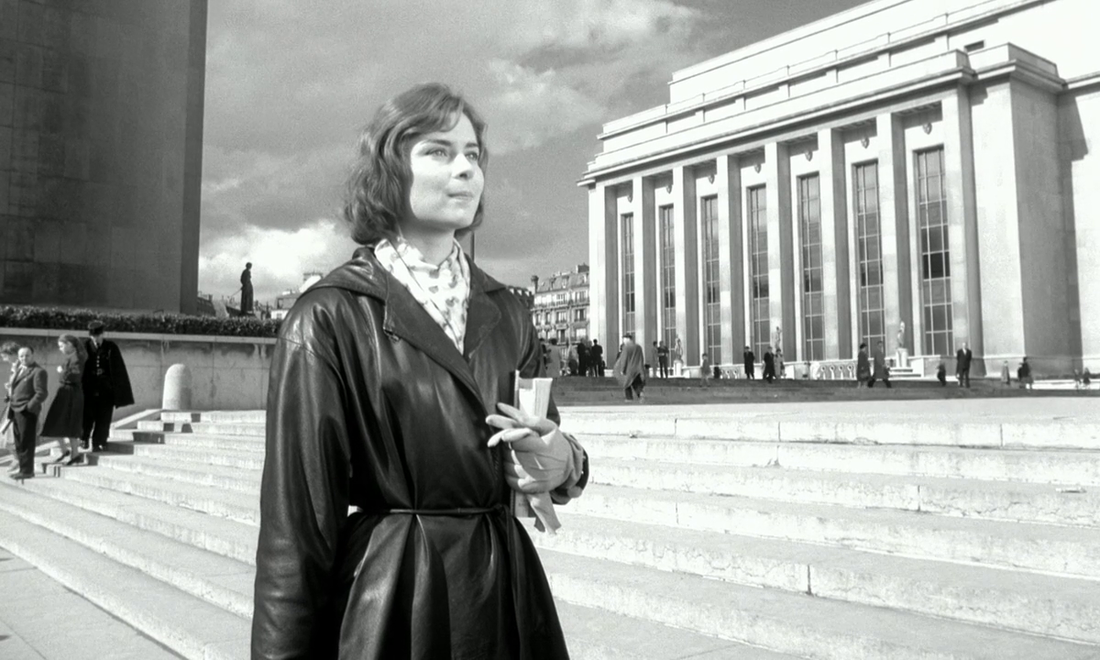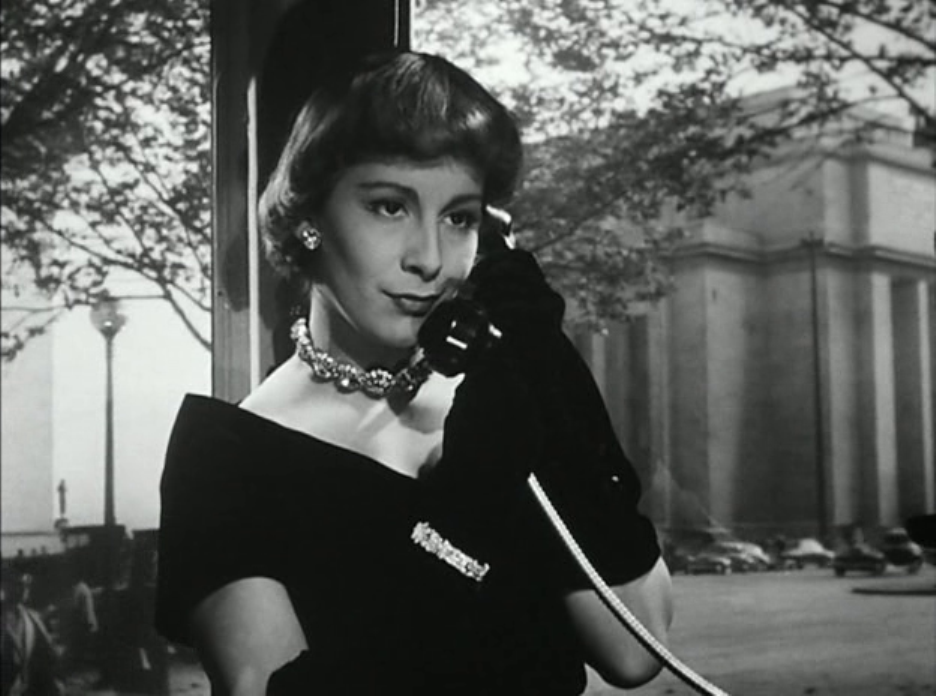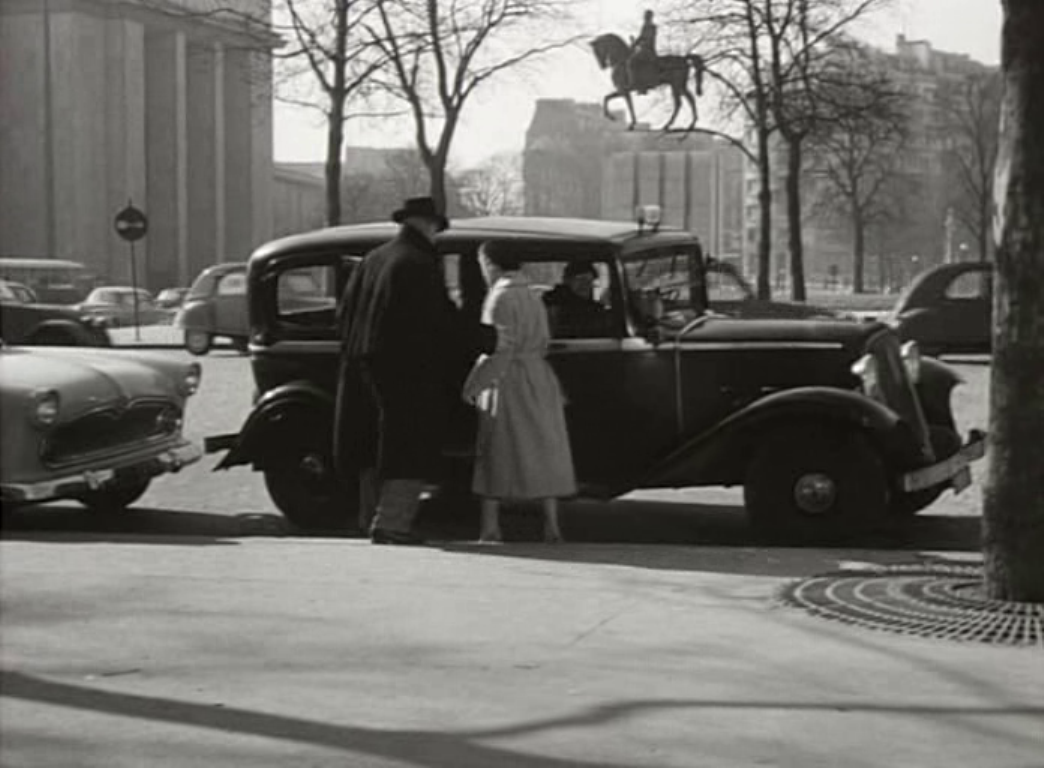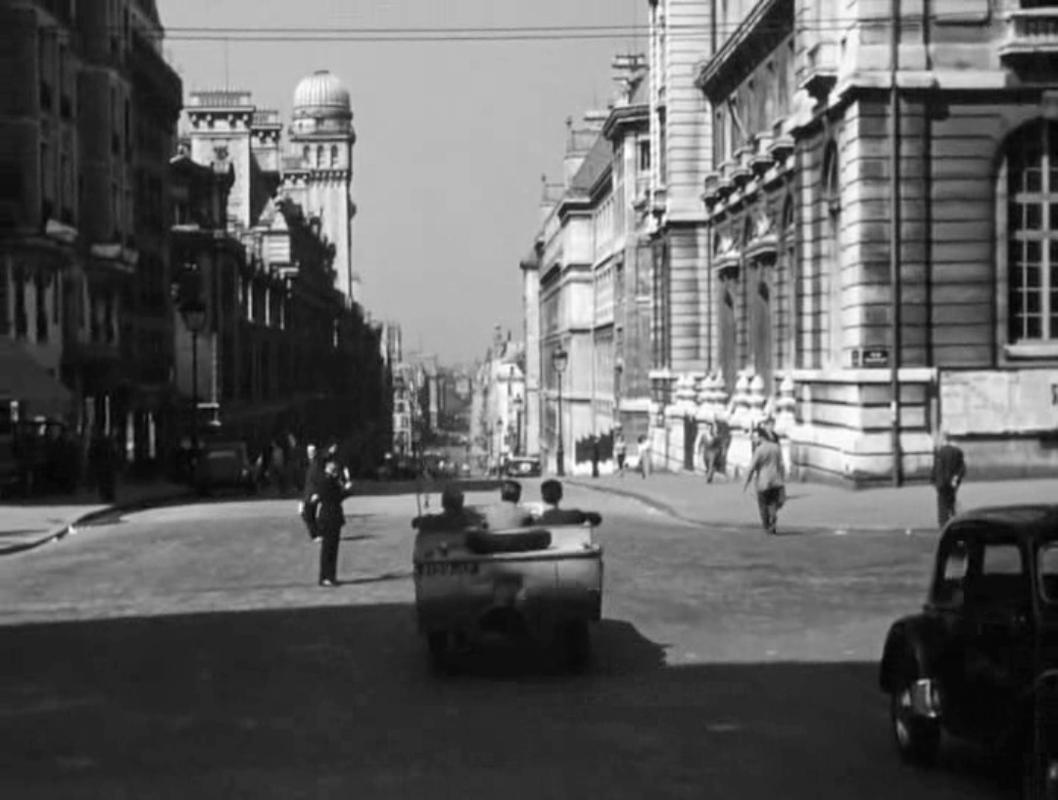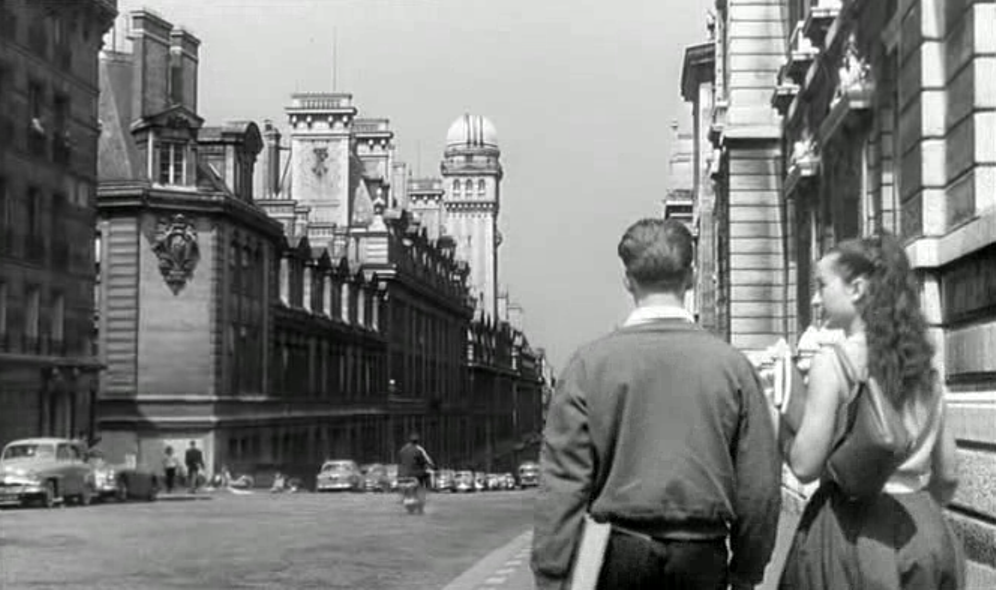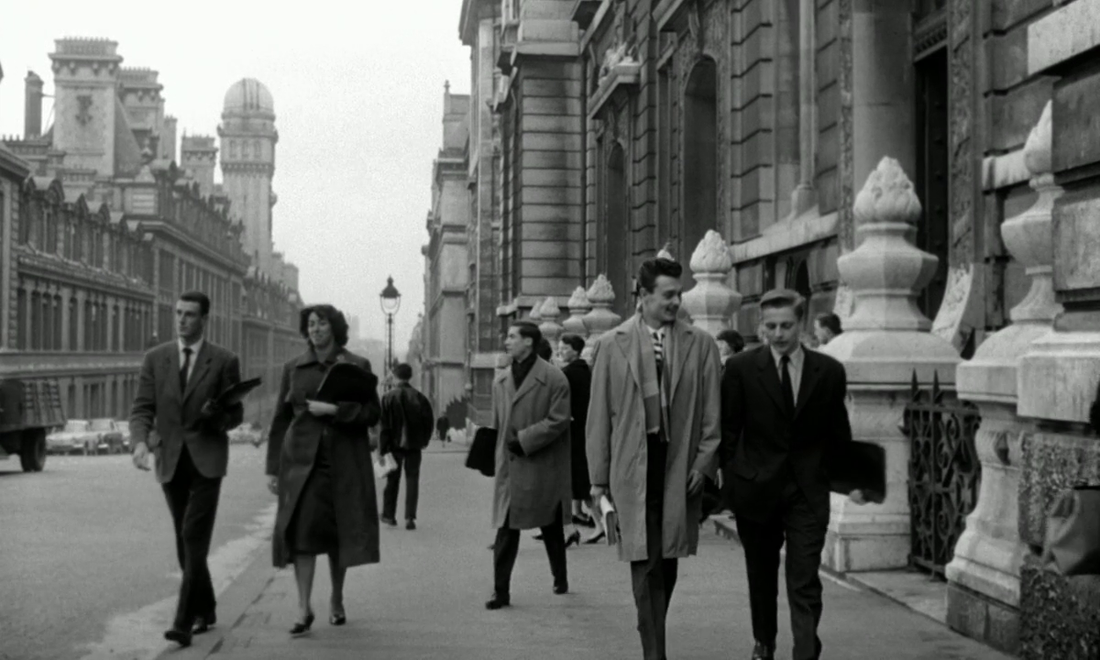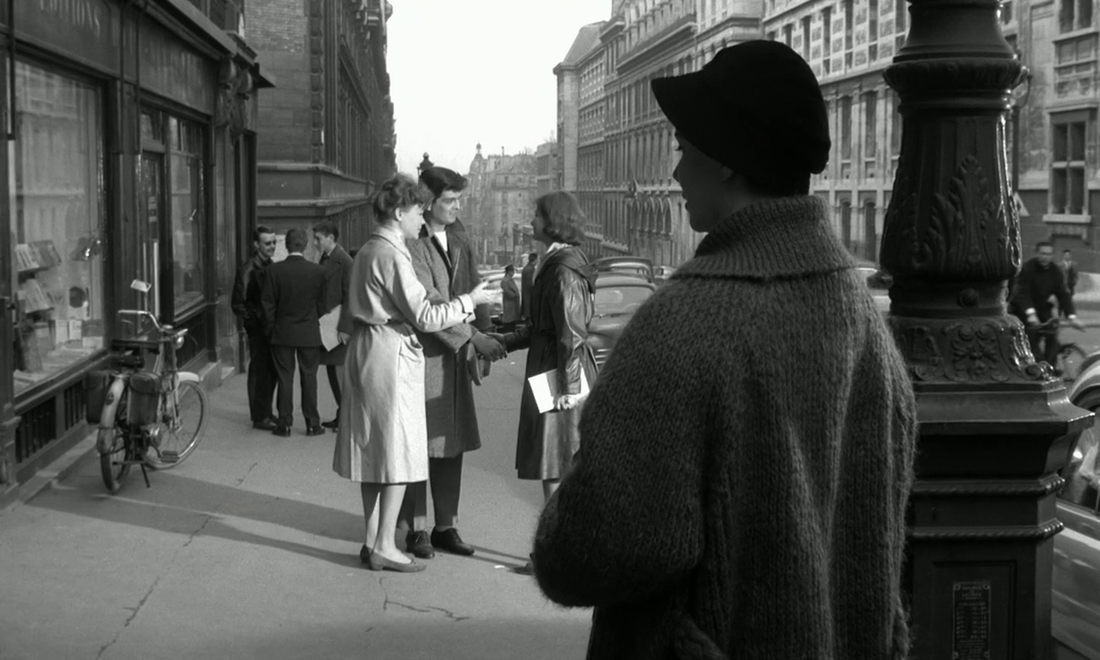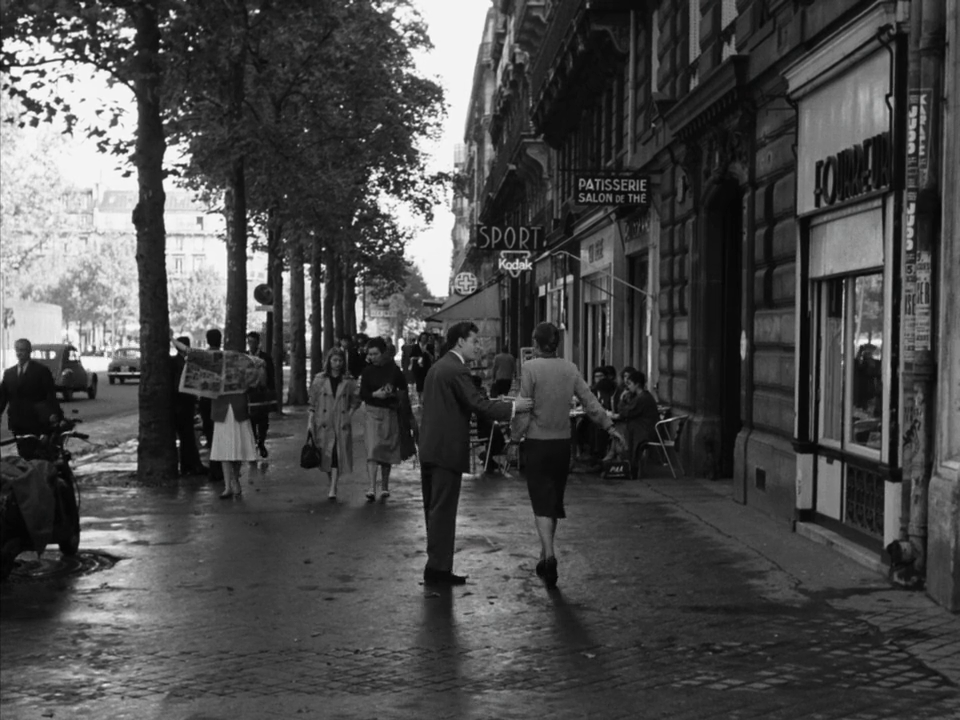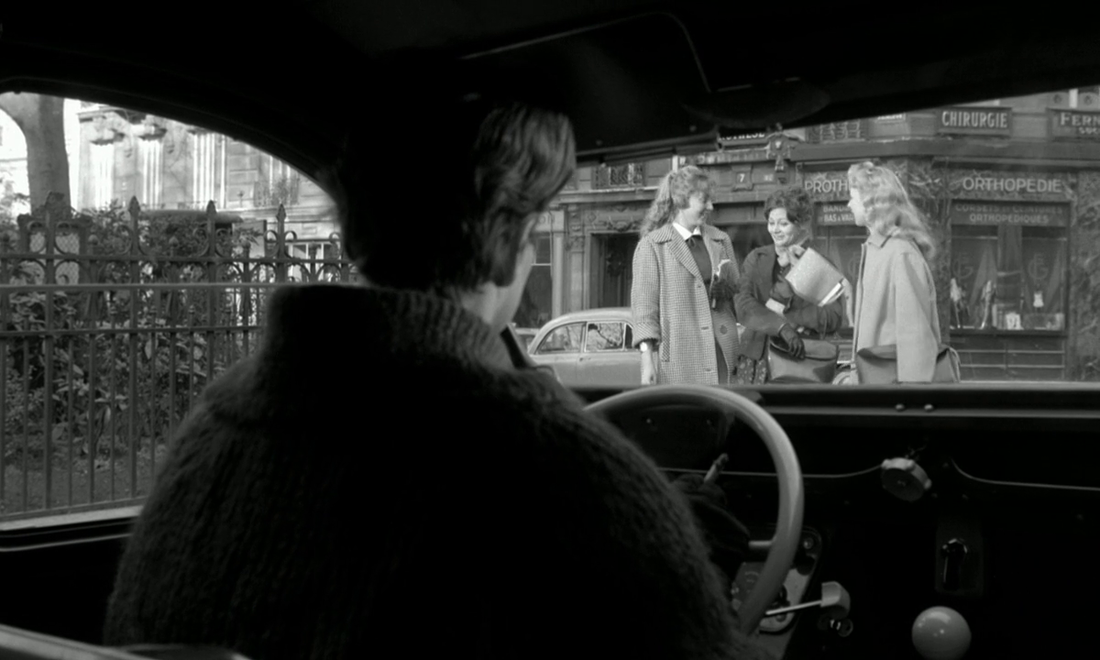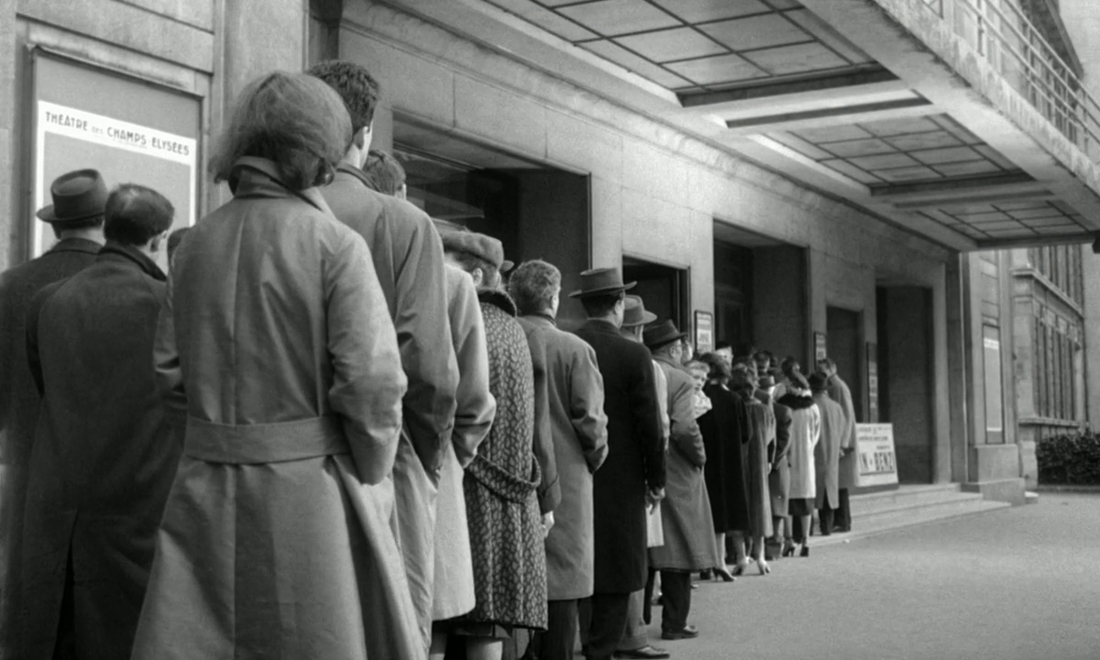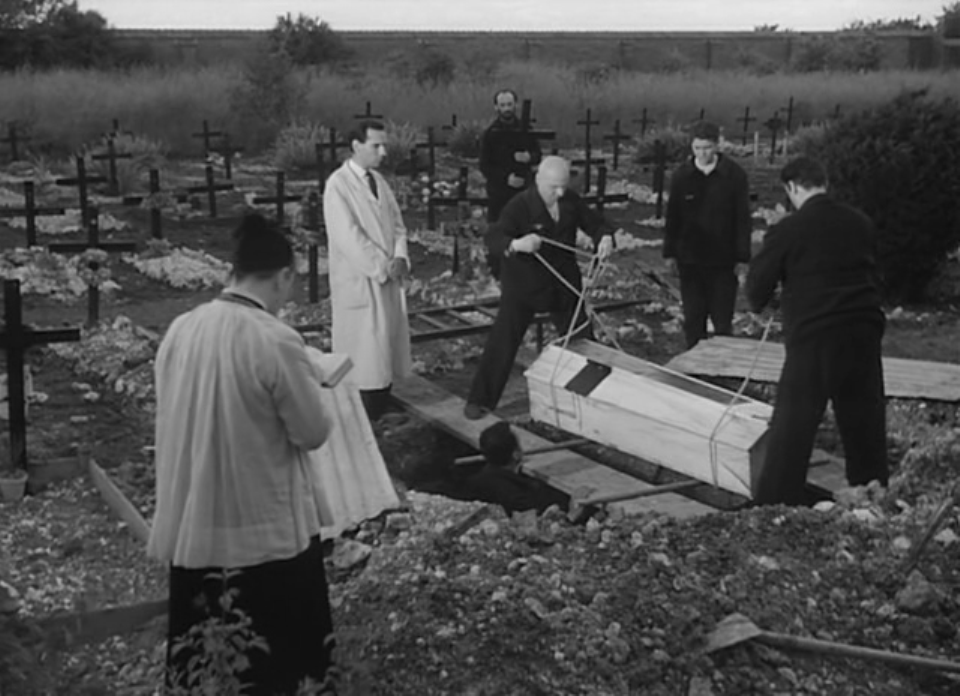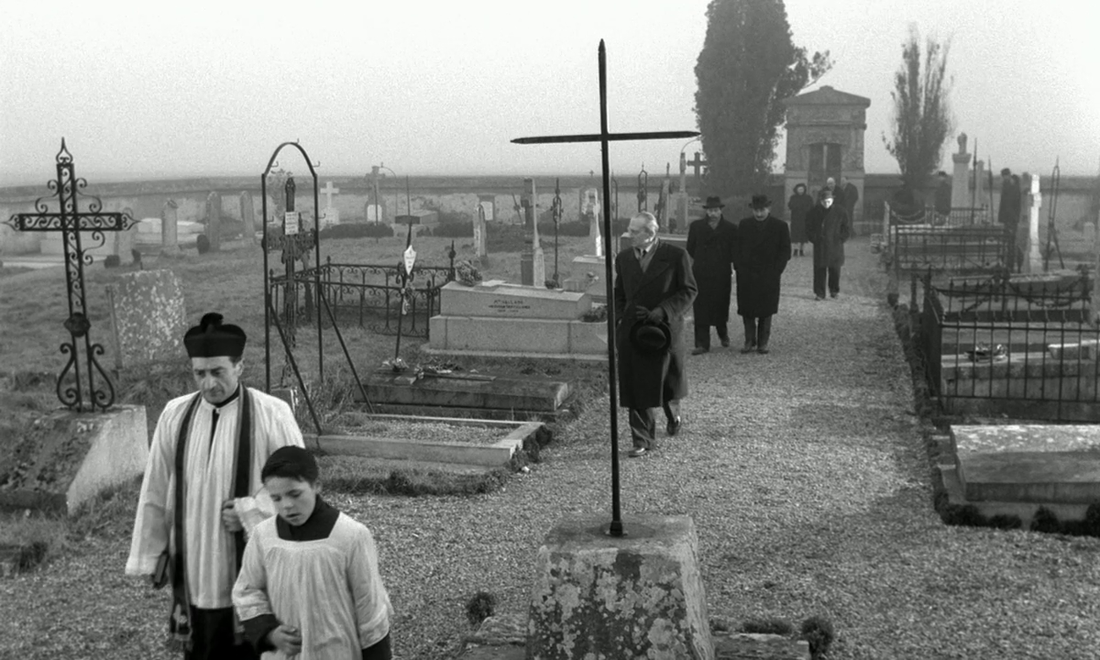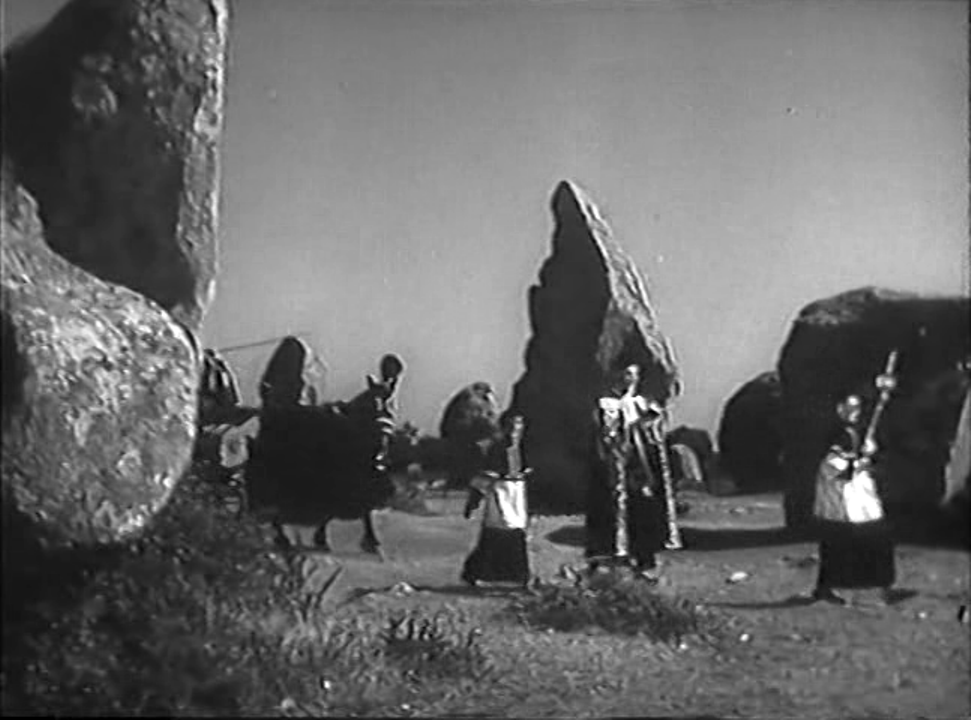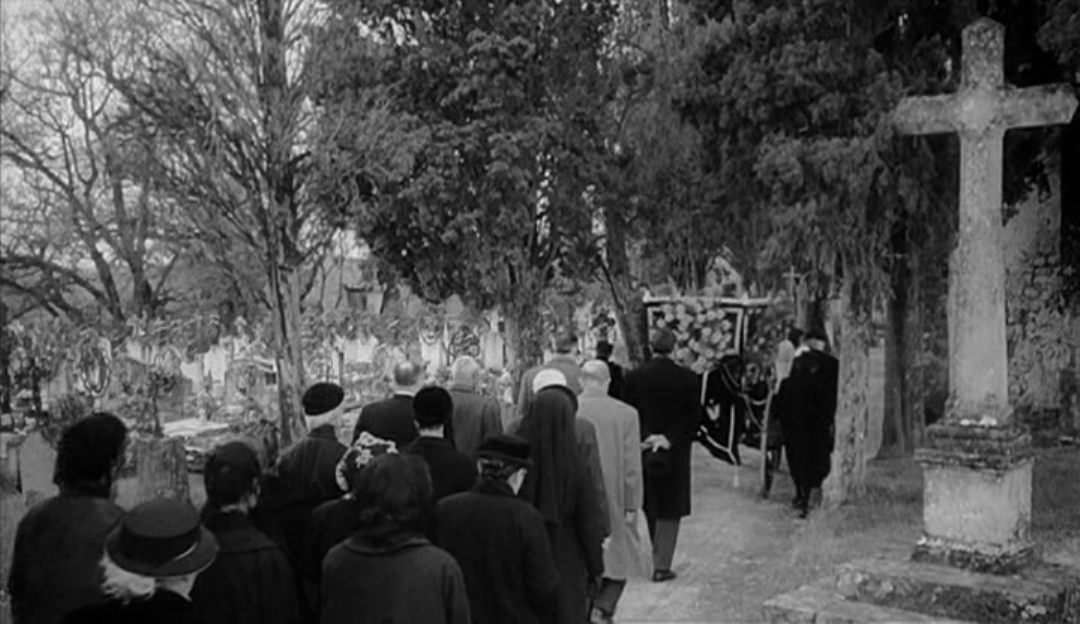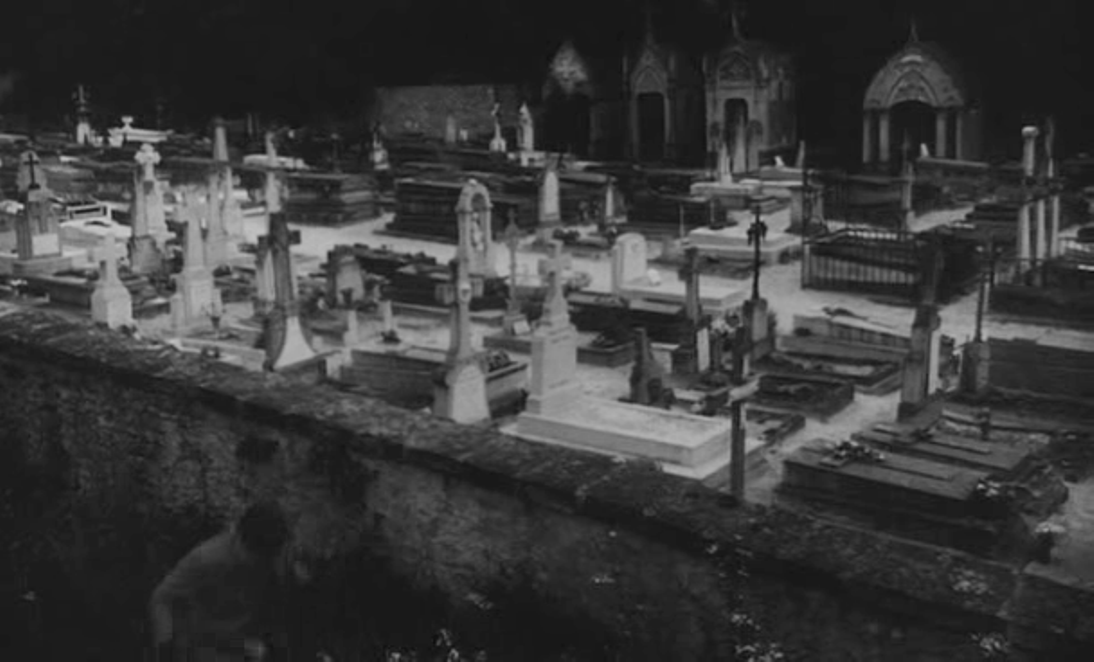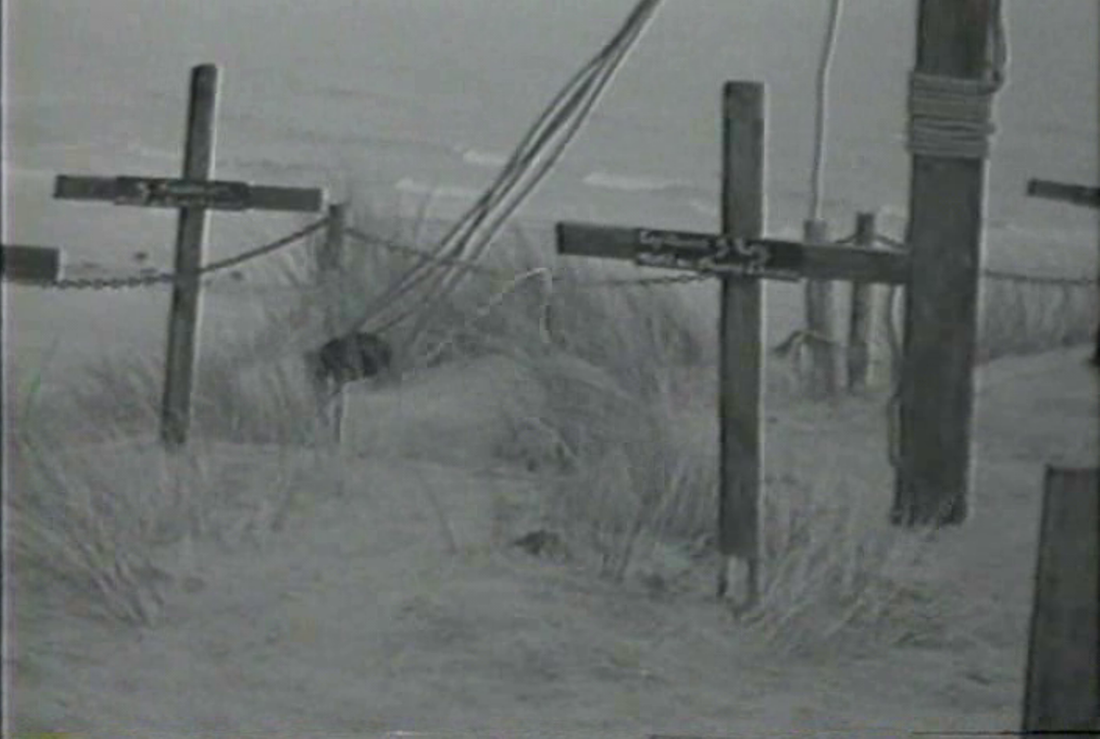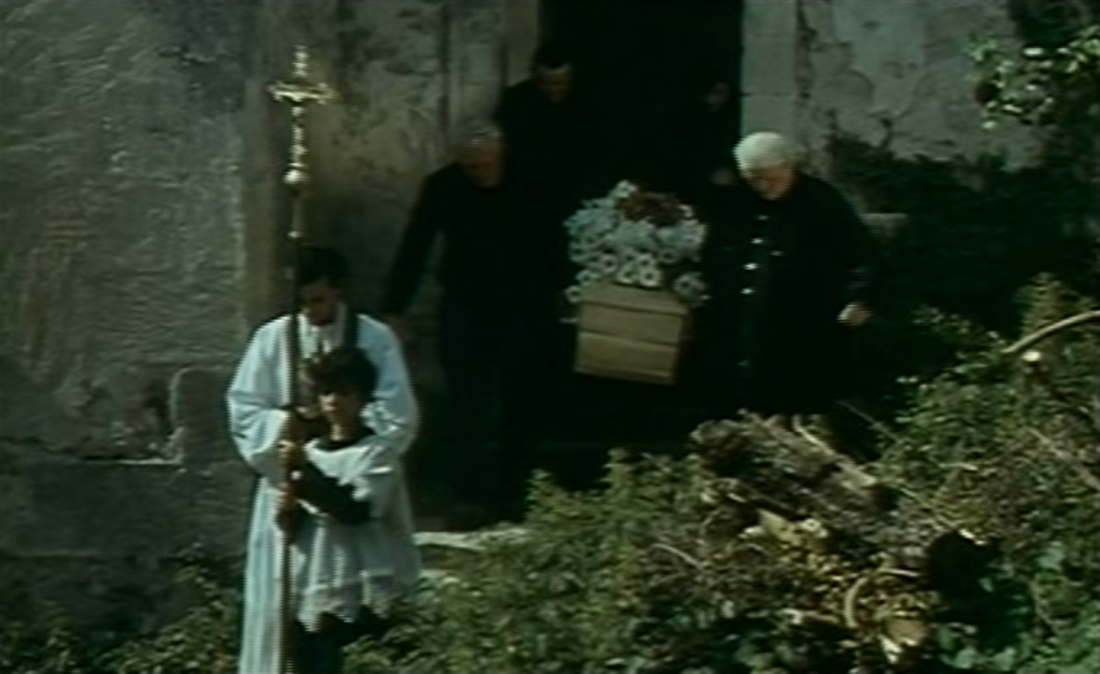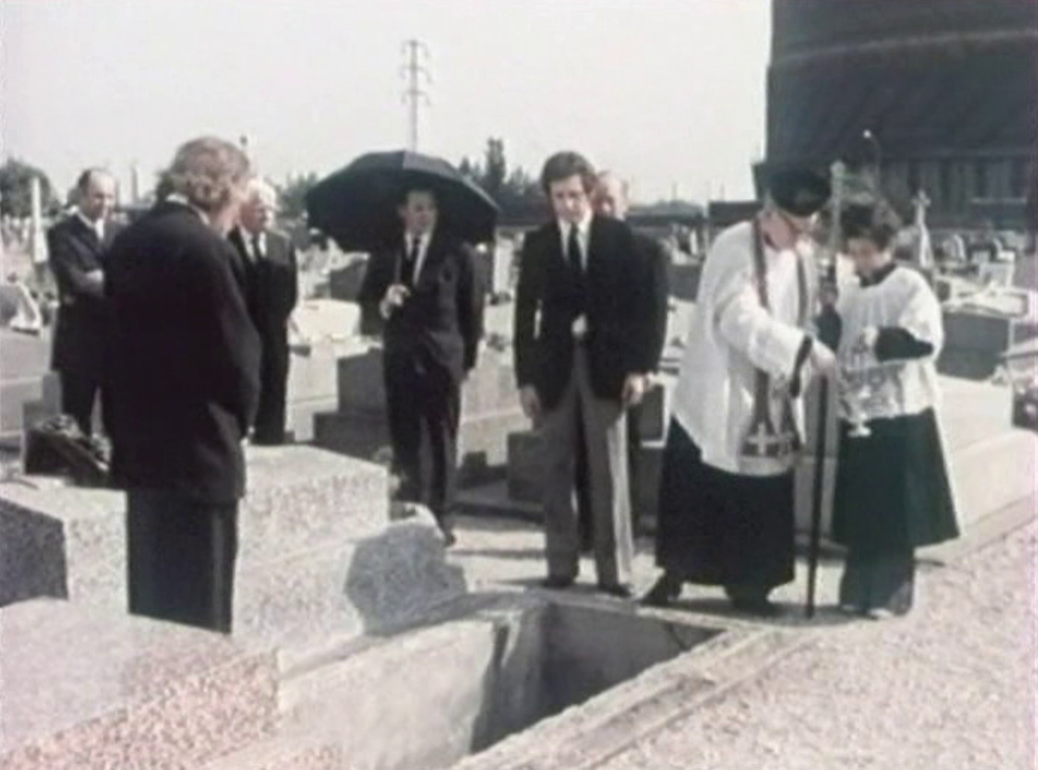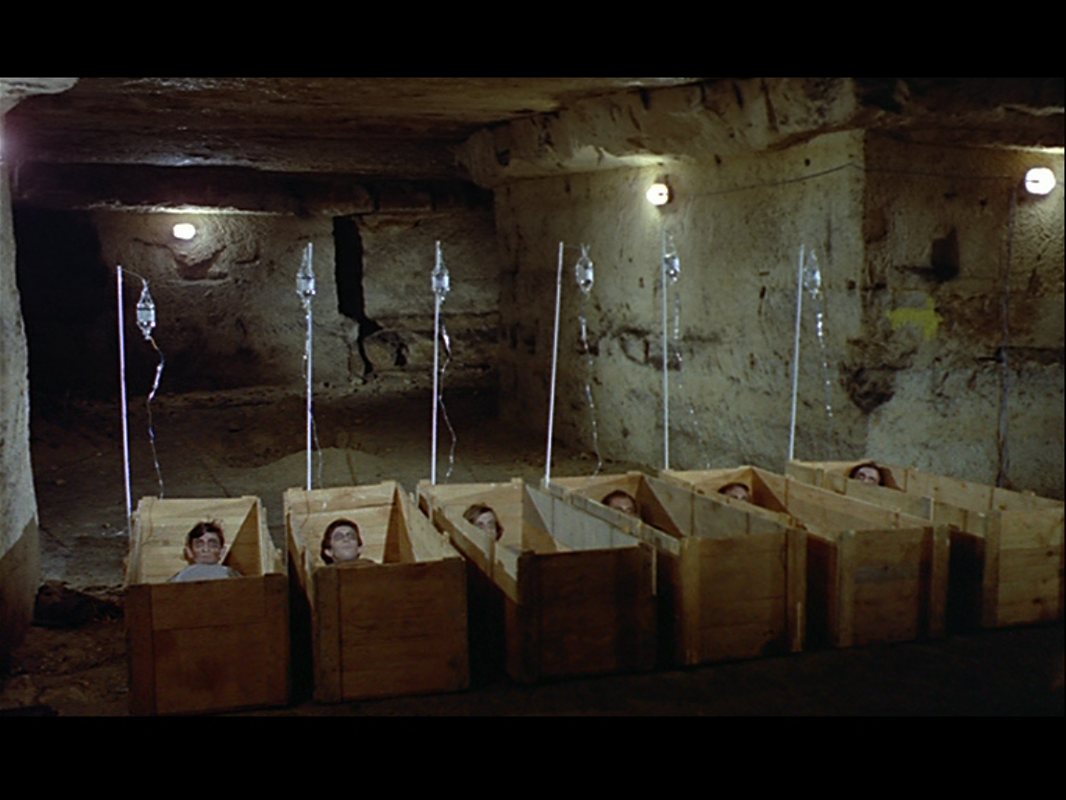Feuilladian Franju - Les Yeux sans visage (1959)
The body of Simone Tessot, supposed to be that of Christiane Genessier, is buried in an isolated cemetery of a type to be found on the outskirts of thousands of French villages.
In a cemetery of this type Diana Monti and her associates discover that the banker Favraux's tomb is empty, in episode four of Feuillade's Judex (1917), 'The Secret of the Tomb':
Franju uses a similar cemetery for his 1963 remake of Judex, showing Judex and his men taking Favraux's body away and then Diana Monti discovering the empty tomb:
Later in Judex Franju tropes on the motif by having Cocantin read The Empty Coffin, the twenty-fifth of the Fantômas novels, published 1913:
This is not one of the novels adapted by Feuillade for his Fantômas films, but Franju took from Starace's cover illustration the nun disguise used by Diana Monti in his Judex:
The tomb in Les Yeux sans visage is not, of course, empty like those in the Fantômas novel and the two Judex films; it just has the wrong person in it, and indeed later, when the body of Edna Gruber is deposited there, it is too full a tomb, rather than an empty one:
There is, however, an empty tomb of sorts in this cemetery. The camera passes slowly enough over one of the tombstones for us to read most of the inscription:
|
The first four lines are hard to make out, but some of it reads:
'Ici repose ... Preschez ... août 1913 ... sa 15e année', remembering a dead child. The rest of the inscription is clearer: 'A la mémoire de Maxime Preschez Mort pour la France à Friedrichsfeld Allemagne 25 Novembre 1917 à l'âge de 25 ans'. Maxime Louis Preschez, born 1890 at Blandy, Seine-et-Marne, was an infantryman in the 231st Regiment, captured and emprisoned at the Friedrichsfeld camp, where he died. Here is a painting of the camp by another prisoner held there, Henri-Martin Remlinger: |
That in this cemetery there is only a memorial to Preschez, rather than his tomb, is of no consequence for Les Yeux sans visage, except in that it allows us to identify where exactly is the cemetery used by Franju. 'M. Preschez' appears among the names on a monument to the fallen dead in the village of Crisenoy, Seine-et-Marne, names that have been further researched and listed online by benevolent genealogists, here.
Although neither I nor Google Street View have visited Crisenoy, confirmation that this is the right place comes from the patrimoine site Topic Topos, commenting on one of the monumental tombs to be found in the cemetery, the caveau Caille-Vaury:
This temple-like sepulchre is, according to Topic Topos, unusual in featuring secular rather than Christian motifs. Feuillade's film shows that it dominates the cemetery:
This is not the sepulchre in which Franju deposits two bodies. For that purpose he has constructed and placed in the cemetery a pastiche, also temple-like but bearing Christian motifs, and inscribed with the family name of his protagonists:
Of the film's five identified locations in the region around Paris, the cemetery at Crisenoy is the furthest from the city - in the bottom right hand corner of the map below:
The film's first location is towards the top right of the map. This is the barrage de Noisiel, near which Louise drops the body of Simone Tessot into the Marne:
The disposal of the body is shown to be a laborious task for one person:
This is not the speed and dexterity with which bodies, live or dead, are thrown into the Marne by Feuillade:
This last scene, where Jacqueline Favraux is thrown from a bridge by Diana Monti's men, is re-enacted in Franju's remake, this time into the Marne at Saint-Maur-des-Fossés:
Genessier's home, the principal location of Les Yeux sans visage, is thirty kilometres away from where Louise dumps that first body, on the other side of Paris, at Marnes-la-Coquette:
Known as the château d'Allemagne, this is a late nineteenth-century suburban residence of a type often used by Feuillade (see here). Genessier's clinic is nearby, at Le Chesnay:
The film suggest that these two locations are contiguous but they are actually about three kilometres apart. Similarly, when Genessier and Louise return from the cemetery after the burial or when they take Edna's body to hide in the cemetery, it is implied that the château is near the cemetery, rather than seventy kilometres away. Only a dissolve separates the two locations each time, whereas when the film wants to emphasise how far the château is from Paris, as Louise takes Edna to her new home, the two locations are separated by eight shots over ninety seconds.
In the course of that car journey Edna remarks that it seems a long way and Louise explains that they've taken a longer route to avoid traffic, but more than just great distance is suggested by the locations they pass through between the place du Trocadéro in Paris and the château in Marnes-la-Coquette. Firstly they approach and drive under the remarkable viaduct at Meudon:
They then drive through stretches of dark forest:
Before stopping at a level crossing as a train passes:
There are level crossings in Feuillade's Les Vampires (episode 4), but here the echo is less Feuilladian than Coctelian. The references to Orphée are clear:
Specifically, Franju constructs this journey through analogy wih the journey on which the Princesse takes Orphée, from Paris to a mysterious suburban villa:
(This is the château de la Boulie at Buc, Les Yvelines.)
When, at the end of the film, Orphée's body is brought back to this house, the car passes under a railway bridge that is less impressive than the viaduct in Les Yeux sans visage but which nonetheless represents a similar threshold to be crossed in passing from life to death:
When, at the end of the film, Orphée's body is brought back to this house, the car passes under a railway bridge that is less impressive than the viaduct in Les Yeux sans visage but which nonetheless represents a similar threshold to be crossed in passing from life to death:
Franju reinforces the reference to Orphée in his use of back-projection, and though he doesn't, like Cocteau, have the back-projected image pass into negative, the lighting of the trees behind Alida Valli invites comparison with the trees behind Maria Casarès:
Franju matches Louise with the Princesse, both wearing pearls, and matches Edna with Orphée, both perplexed by the nature of the journey:
If Franju stages his journey towards death through reference to Cocteau, Cocteau staged his journey through reference to Murnau. To reach Nosferatu's castle Harker must cross two bridges:
And for part of his journey the film turns to negative:
Indirectly, then, there is something of Murnau in Les Yeux sans visage, alongside the more evident feuilladisme of Franju's suburban settings.
The Paris settings of Les Yeux sans visage are untouched by these influences, drawing less on film history than on the immediate habits of 1950s Paris cinema. The morgue, where Dr Genessier falsely identifies Simone Tessot as his daughter, is familiar from Du rififi chez les hommes and Les Diaboliques:
The palais de Chaillot, near where Louise meets Edna before driving her to the Genessier clinic, is a location in Sous le ciel de Paris (1951) and Le Rouge est mis (1957) :
The rue Saint Jacques, where Louise first spots Edna among other students, signposts the Latin Quarter in Rendez-vous de Juillet and Les Tricheurs:
Juliette Mayniel, who plays Edna, was in this vicinity a few months earlier, playing a student in Les Cousins:
One of the two other Paris locations of Les Yeux sans visage is the nearby rue des Ecoles, by the square Paul Painlevé:
The other is the Théâtre des Champs Elysées on the avenue Montaigne:
Appendix: Franju's cemeteries
There are burial or graveyard scenes in almost every one of Franju's fiction films:

